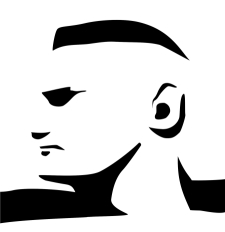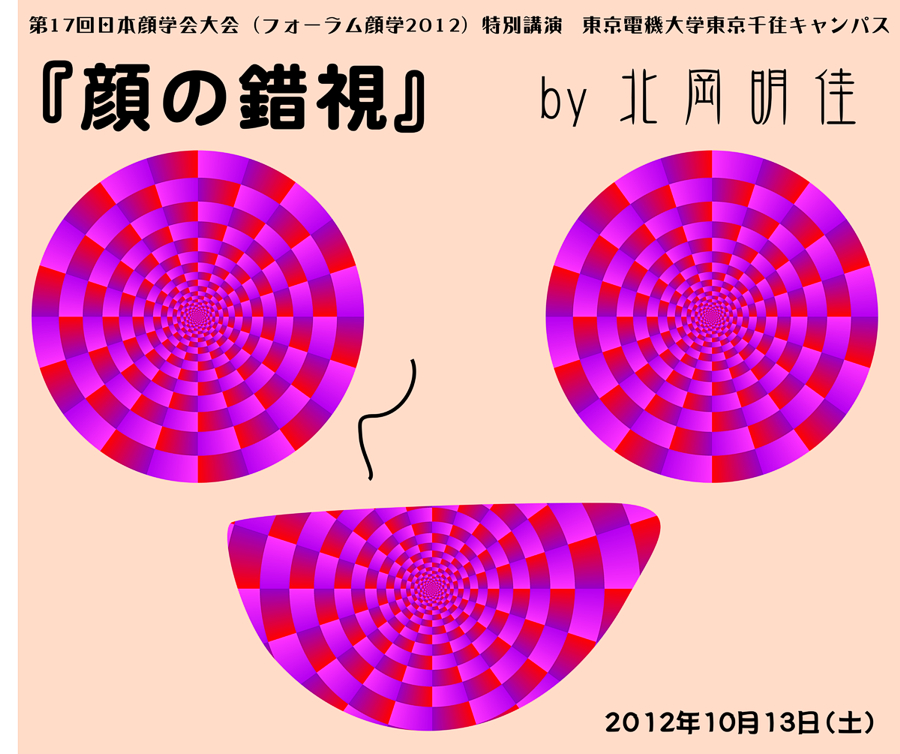
17th JFACE Annual Conference (Forum Kaogaku 212)
October 13, 2012, 16:20-17:20, Tokyo Denki University
Face illusions

Akiyoshi Kitaoka (Ritsumeikan University) since October 10, 2012 Handout
Today's menu
1. Illusion of eye direction
2. Illusion of face inversion
3. Geometrical illusion of face
4. Others
What is the face illusion?
Golden Pass Panoramic at Montreux, Switzerland in 2010
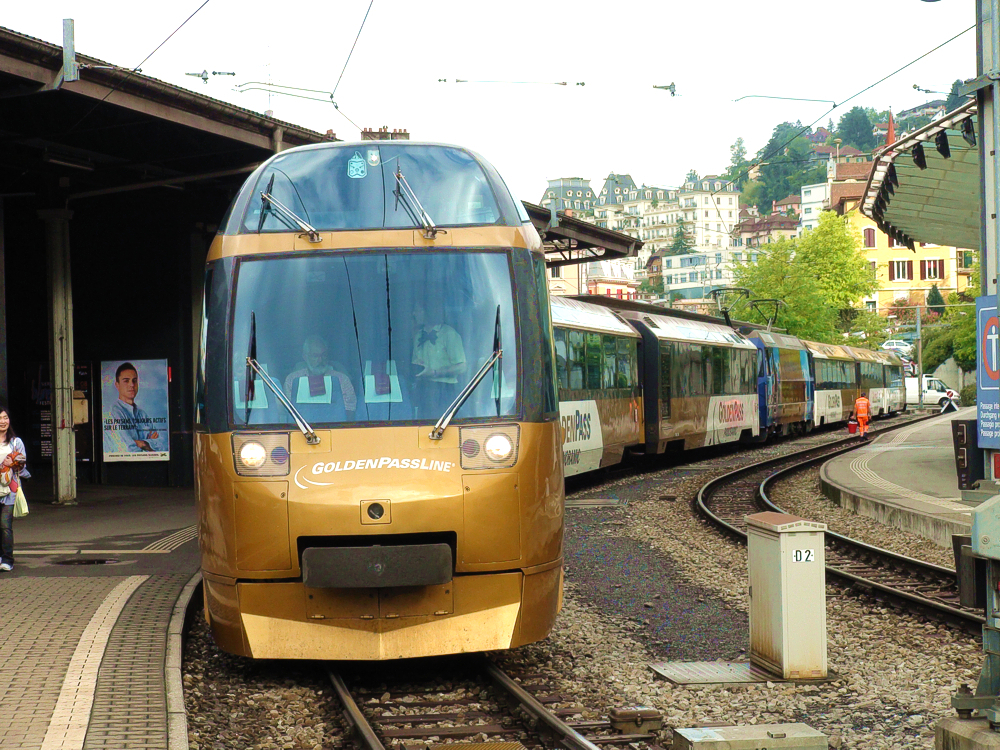
near Meiringen, three-tiered falls!
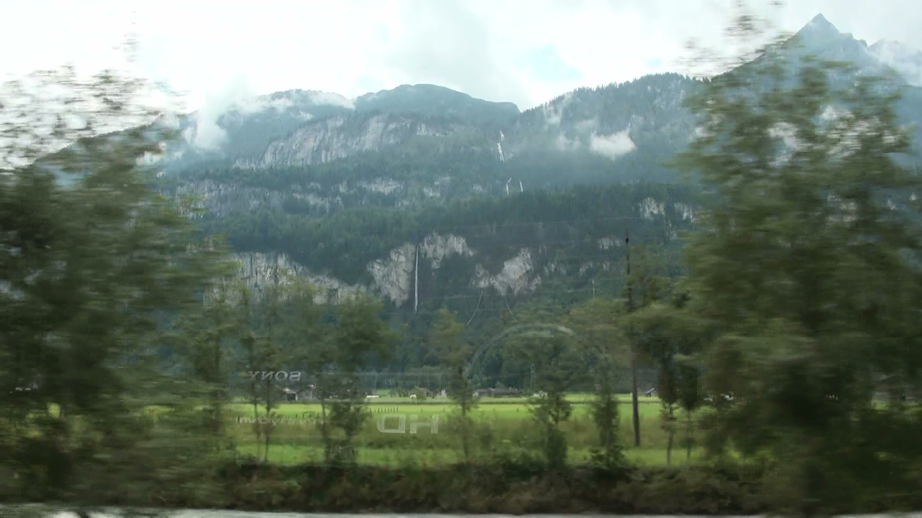
A face
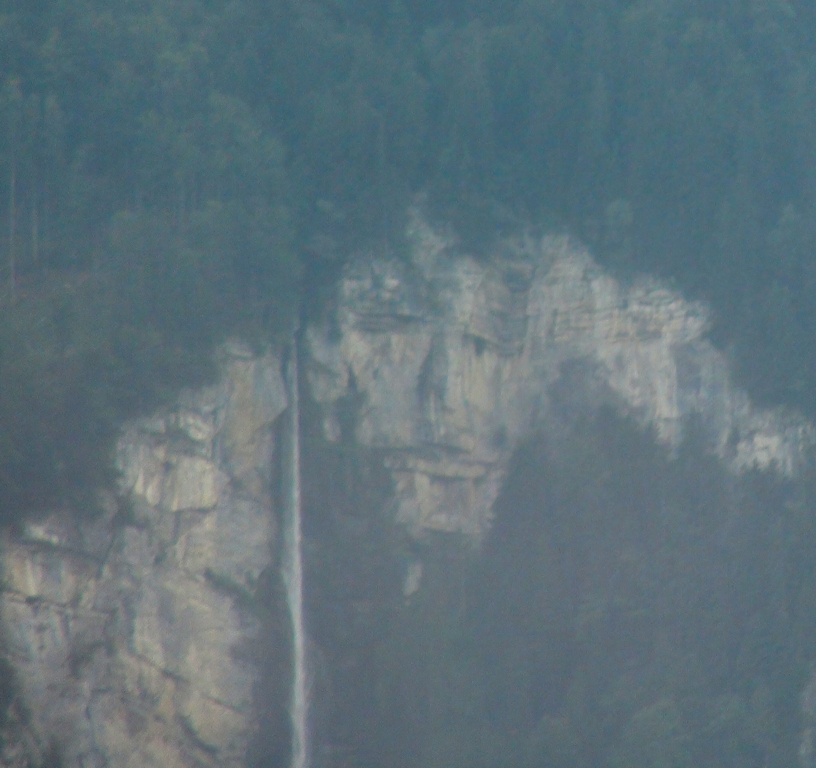
"Face shadow" near the Ritsumeikan University, Kyoto, Japan
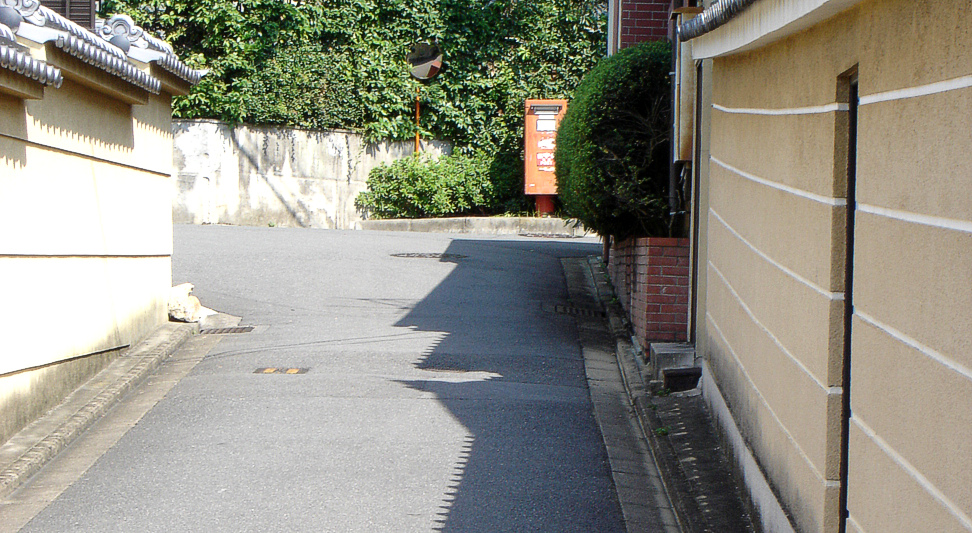
Dinasaur's Face in my parents' house, Kochi, Japan
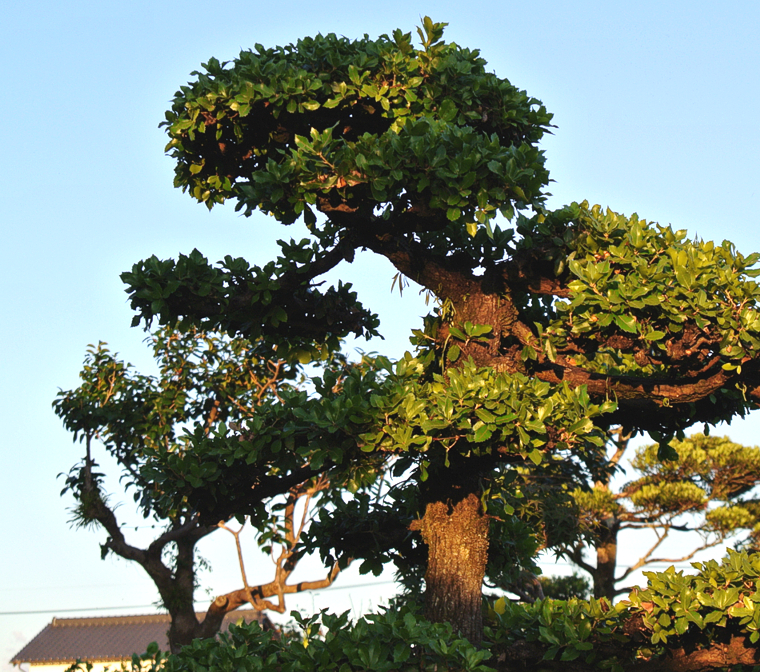
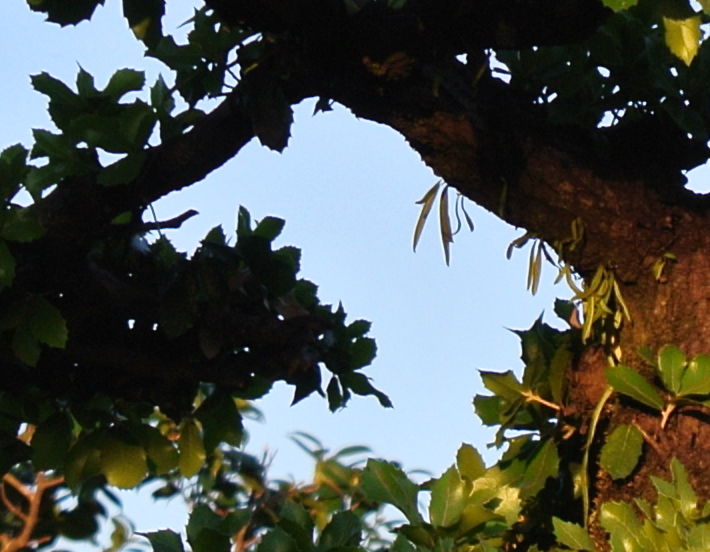
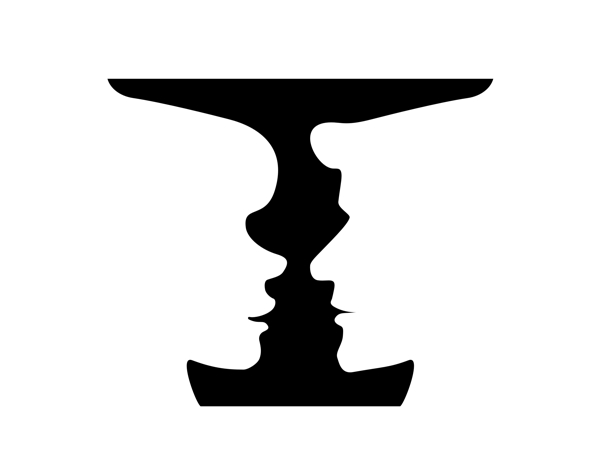
"Asymmetrical vase-face illusion"
Copyright Akiyoshi Kitaoka 2011 (October 10)
Q1. Is the effect of Giuseppe Arcimboldo's artworks the face illusion?
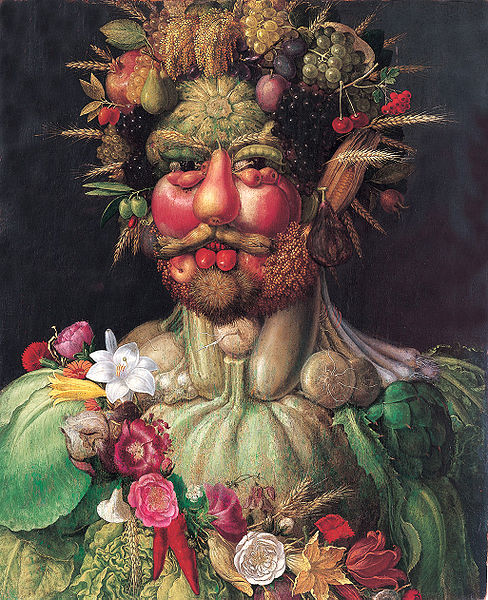
Q2. Is the effect of Henohenomoheji (Japanese traditional face picture
made of Japanese letters) the face illusion?
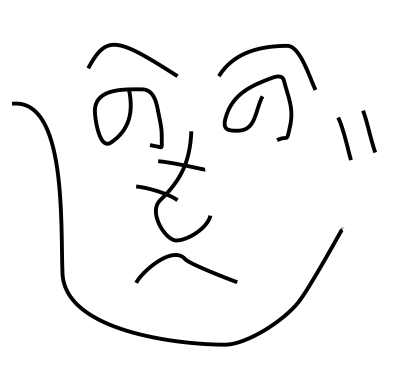
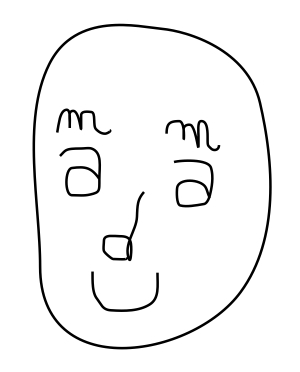
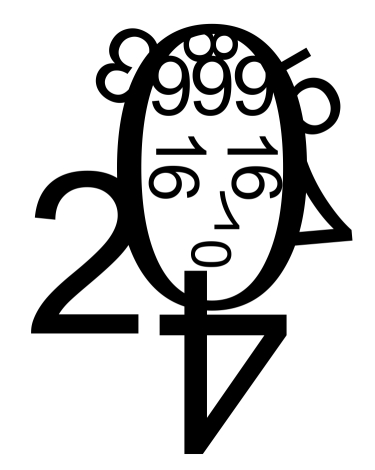
Examples of the alphabetic counterpart and numeral counterpart
Q3. Is the kao-moji (emoticon, smiley) the face illusion?

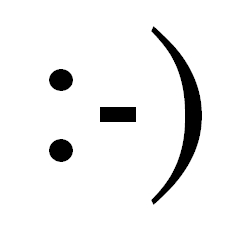
Kao-moji (emoticon, smiley)
How about the hollow face illusion?
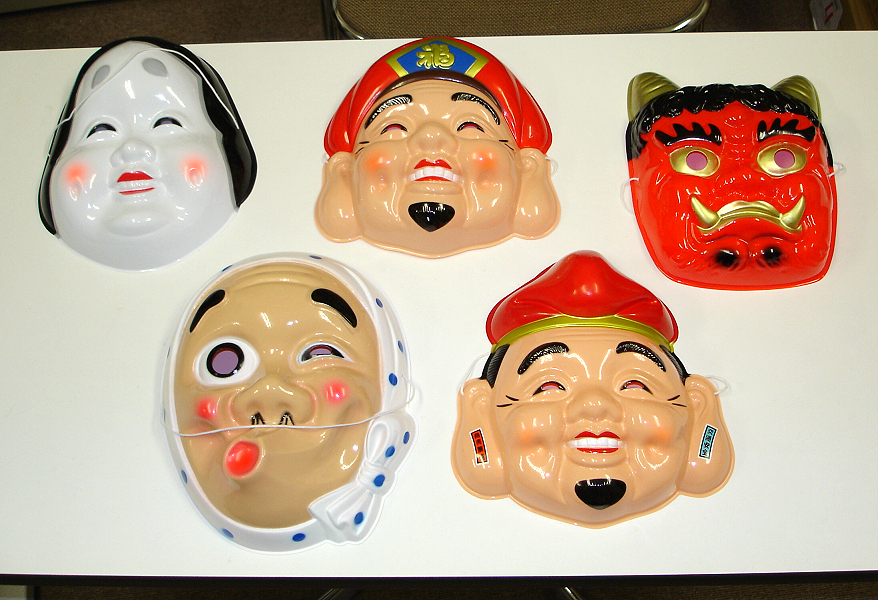
Masks popular in Japan. To buy them, click.
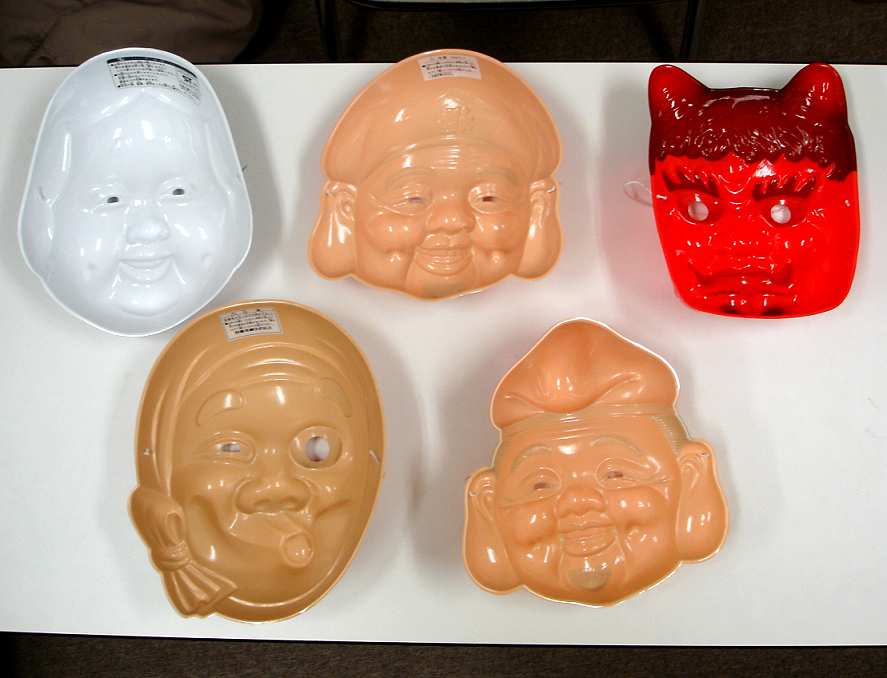
Hollow face illusion
References
Gregory, R. L.: The Intelligent Eye. Weidenfeld and Nicolson, London, 1970
Howard, I. P.: Occluding edges in apparent reversal of convexity and concavity. Perception, 12, 85-86, 1983

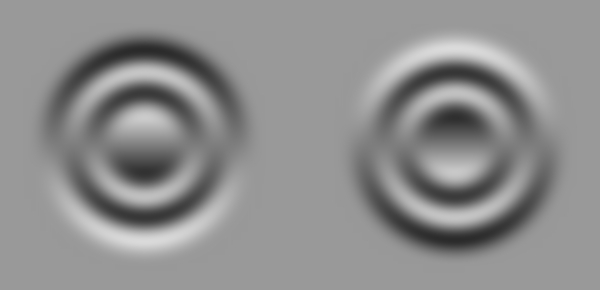
Crater illusion
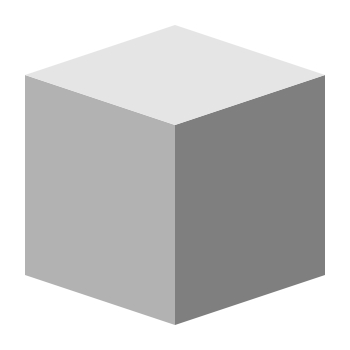
Predominance of convex
How about the Thatcher illusion?
"An illustration of the Thatcher illusion"
The left image shows an upside-down image of an illustration of a smiling lady. The right image is different from the left one, in which each of eyes and the mouth is inverted in the inverted face. Observers do not feel it bizarre so much, while it appears to be rather bizarre when the image is inverted and the face is upright (see below). This effect is called the Thatcher illusion (Thompson, 1980). Peter's page
Copyright Akiyoshi Kitaoka 2007 (November 15)
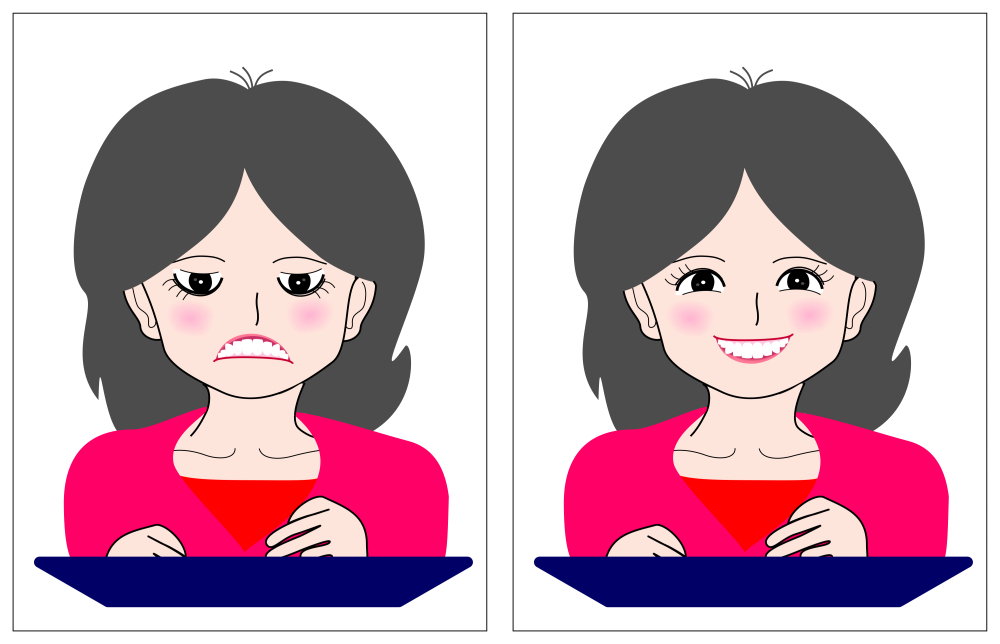
References
Arnheim, R. (1954) Art and visual perception: A
psychology of the eye. Berkeley: University of California
Press.
Bartlett, J. C. and Searcy, J. (1993) Inversion and configuration
of faces. Cognitive Psychology, 25, 281-316.
Bertin, E. and Bhatt, R. S.
(2004) The Thatcher illusion and face processing in infancy. Developmental
Science, 7, 431?436.
Boutsen, L. and Humphreys, G. W. (2002) Face context
interferes with local part processing in a prosopagnosic patient.
Neuropsychologia, 40, 2305-2313.
Boutsen, L. and Humphreys, G. W. (2003)
The effect of inversion on the encoding of normal and "thatcherized" faces.
Quarterly Journal of Experimental Psychology A, 56, 955-975.
Boutsen, L.,
Humphreys, G. W., Praamstra, P., and Warbrick T. (2006) Comparing neural
correlates of configural processing in faces and objects: an ERP study of the
Thatcher illusion. Neuroimage, 32, 352-367.
Carbon, C. C., Schweinberger,
S. R., Kaufmann, J. M., and Leder H. (2005) The Thatcher illusion seen by the
brain: an event-related brain potentials study. Cognitive Brain Research, 24,
544-555.
Carey, S. and Diamond, R. (1977) From piecemeal to
configurational representation of faces. Science, 195 (4275),
312-314.
Diamond, R. and Carey, S. (1986) Why faces are and are not
special: An effect of expertise. Journal of Experimental Psychology: General,
115, 107-117.
Edmonds, A. J. and Lewis, M. B. (2007) The effect of
rotation on configural encoding in a face-matching task. Perception, 36,
446-460.
Ellis, H. D. (1975) Recognising faces. British Journal of
Psychology, 66, 409-426.
Farah, M. J., Tanaka, J. W., and Drain, H. M.
(1995) What causes the face inversion effect? Journal of Experimental
Psychology: Human Perception and Performance, 21, 628-634.
Goldstein, A.
G. (1965) Learning of inverted and normally oriented faces in children and
adults. Psychonomic Science, 3, 447-448.
Leder, H., Candrian, G., Huber,
O., and Bruce, V. (2001) Configural features in the context of upright and
inverted faces. Perception, 30, 73-83.
Lewis, M. B. (2001) The Lady's not
for turning: Rotation of the Thatcher illusion. Perception, 30,
769-774.
Lewis, M. B. (2003) Thatcher's children: Development and the
Thatcher illusion. Perception, 32, 1415-1421.
Lewis, M. B. and Johnston,
R. A. (1997) The Thatcher illusion as a test of configural disruption.
Perception, 26, 225-227.
Lobmaier, J. S. and Mast, F. W. (2007) The
Thatcher illusion: Rotating the viewer instead of the picture. Perception, 36,
537-546.
Milivojevic, B., Clapp, W. C., Johnson, B. W., and Corballis, M.
C. (2003) Turn that frown upside down: ERP effects of thatcherization of
misorientated faces. Psychophysiology, 40, 967-978.
Murray, J. E., Yong, E., and Rhodes, G. (2000) Revisiting the perception
of upside-down faces. Psychological Science, 11, 492?496.
Parks, T. E. (1983) Letters to the
Editor. Perception, 12, 88.
Parks, T. E., Coss, R. G., and Coss, C. S.
(1985) Thatcher and the Cheshire cat: context and the processing of facial
features. Perception, 14, 747-754.
Rakover, S. S. (1999) Thompson's
Margaret Thatcher illusion: when inversion fails. Perception, 28,
1227-1230.
Rakover, S. S. and Teucher, B. (1997) Facial inversion
effects: parts and whole relationship. Perception & Psychophysics, 59,
752-761.
Rhodes, G. and Jeffery, L. (2009) The Thatcher illusion: Now you see it,
now you don't. Perception, 38, 927-929.
Rhodes, G., Brake, S., and Atkinson, A. P. (1993) What's lost in inverted
faces? Cognition, 47, 25-57.
Rock, I. (1974) The perception of
disoriented figures. Scientific American, 230, 78-85.
Rock, I. (1988) On
Thompson's inverted-face phenomenon (Research Note). Perception, 17,
815-817.
Rouse, H., Donnelly, N., Hadwin, J. A., and Brown, T. (2004) Do
children with autism perceive second-order relational features? The case of the
Thatcher illusion. Journal of Child Psychology and Psychiatry, 45,
1246?1257.
Sjoberg, W. and Windes, J. (1992) Recognition times for
rotated normal and "Thatcher" faces. Perceptual and Motor Skills, 75,
1176-1178.
Sturzel, F. and Spillmann, L. (2000) Thatcher illusion:
Dependence on angle of rotation. Perception, 29, 937-942.
Talati, Z., Rhodes, G., and Jeffery, L. (2010) Now you see it, now you
don't: Shedding light on the Thatcher illusion. Psychological Science,
21, 219-221.
Tanaka, J. W.
and Farah, M. J. (1993) Parts and wholes in face recognition. Quarterly Journal
of Experimental Psychology A., 46, 225-245.
Thompson, P. (1980) Margaret
Thatcher: a new illusion. Perception, 9, 483-484.
Valentine, T. (1988)
Upside-down faces: A review of the effect of inversion upon face recognition.
British Journal of Psychology, 79, 471-491.
Valentine, T. and Bruce, V.
(1988) What's up? The Margaret Thatcher illusion revisited. Perception, 14,
515-516.
Yin, R. K. (1969) Looking at upside-down faces. Journal of
Experimental Psychology, 81, 141-145.
→ サッチャー錯視の日本語レビューはこちら PDF
北岡明佳 (2008) サッチャー錯視 子安増生・二宮克美(編)「キーワードコレクション 心理学フロンティア」 新曜社(2008年6月刊行), pp. 6-9
1. Illusion of eye direction
1.1 Wollaston illusion (Wollaston's effect)
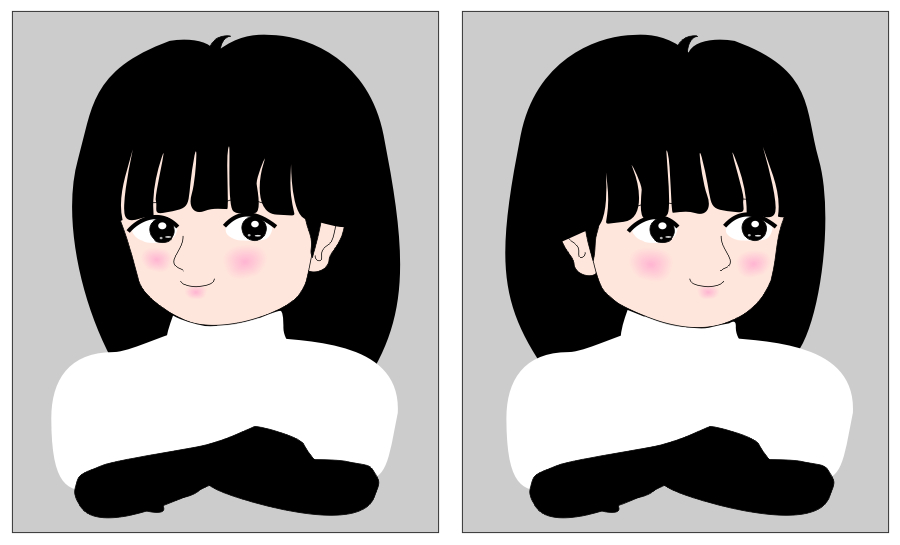
The left face appears to gaze at the observer while the right one appears to see leftward (for her), though the eyes are identical between them. This phenomenon was proposed by Wollaston (1824).
Copyright Akiyoshi Kitaoka 2007 (December 20)
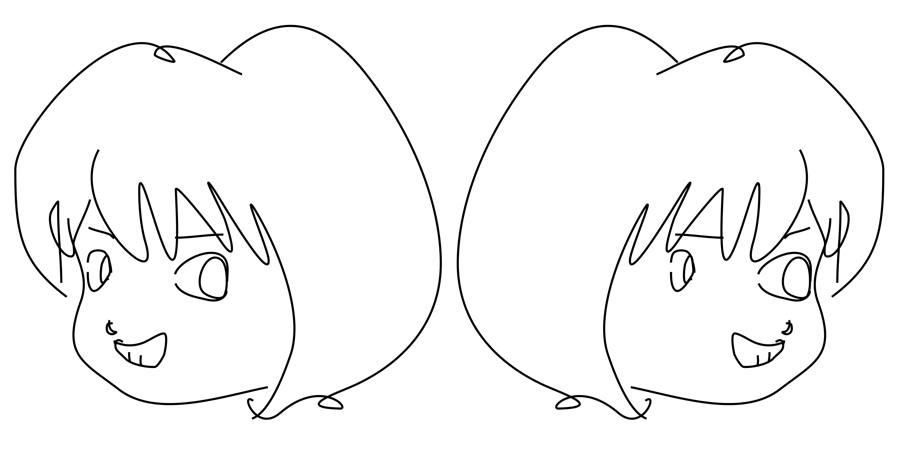
Copyright Akiyoshi Kitaoka 2012 (July 3)
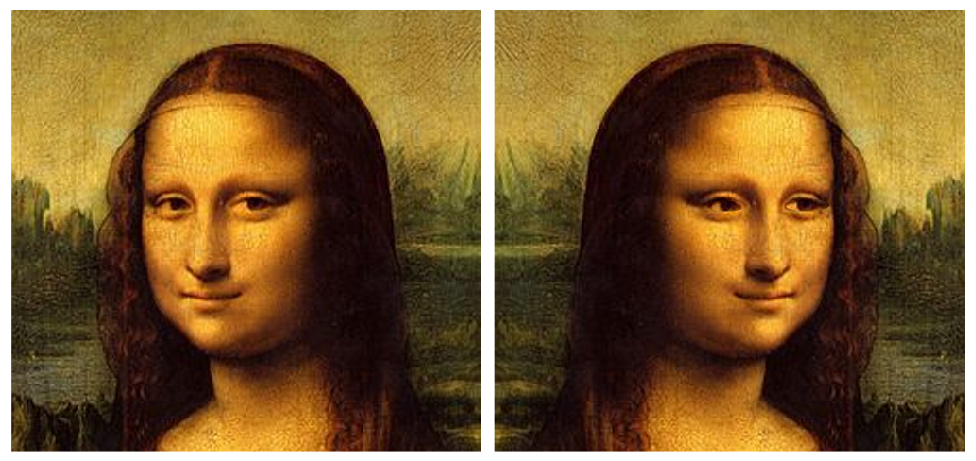
Original
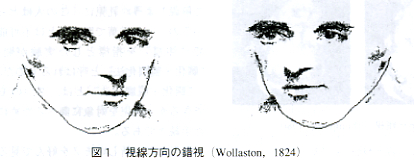
adopted from: 山口真美 (2006) 乳児に視線はどう見えるのか? 心理学ワールド, 34(特集・視線とコミュニケーション), 5-8.
References
Gibson, J. J. and Pick, A. D.: Perception of another person’s looking behavior. American Journal of Psychology, 76, 386-394, 1963
Langton, S. R. H., Honeyman, H., and Tessler, E.: The influence of head contour and nose angle on the perception of eye gaze direction. Perception & Psychophysics, 66, 752–771, 2004
Langton, S. R. H., Watt, R. J., and Bruce, V.: Do the eyes have it? Cues to the direction of social attention. Trends in Cognitive Sciences, 4, 50-59, 2000.
Nakato, E., Otsuka, Y., Konuma, H., Kanazawa, S., Yamaguchi, M. K., and Tomonaga, M.: Perception of illusory shift of gaze direction by infants. Infant Behavior and Development, 32, 422-428, 2009
Todorović, D.: Geometrical basis of perception of gaze direction. Vision Research, 46, 3549-3562, 2006
Wollaston, W. H.: On the apparent direction of eye in a portrait. Philosophical Transactions of the Royal Society of London, B114, 247-256, 1824
1.1b Wollaston illusion: Vertical
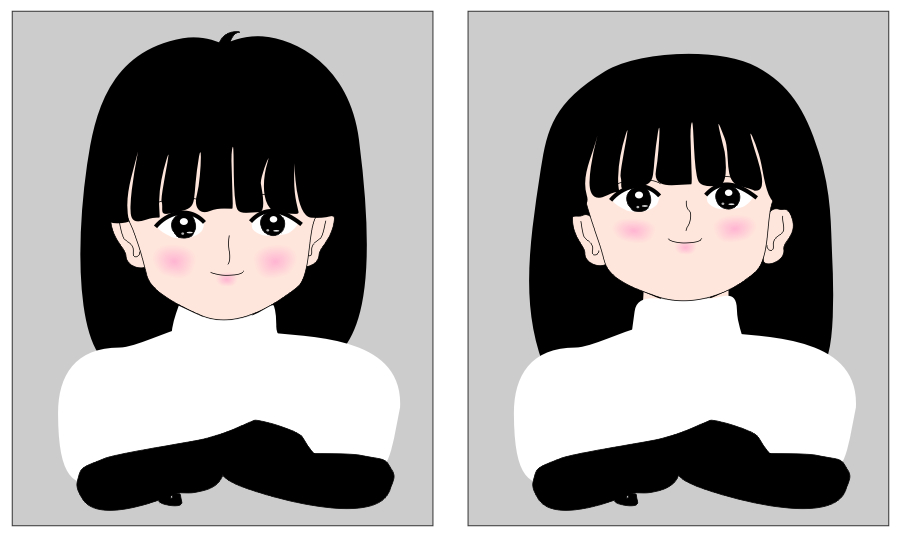
"Longitudinal Wollaston illusion (corrected)"
The left face appears to gaze at the observer while the right one appears to see upward, though the eyes are identical between them.
Copyright Akiyoshi Kitaoka 2007 (December 26)
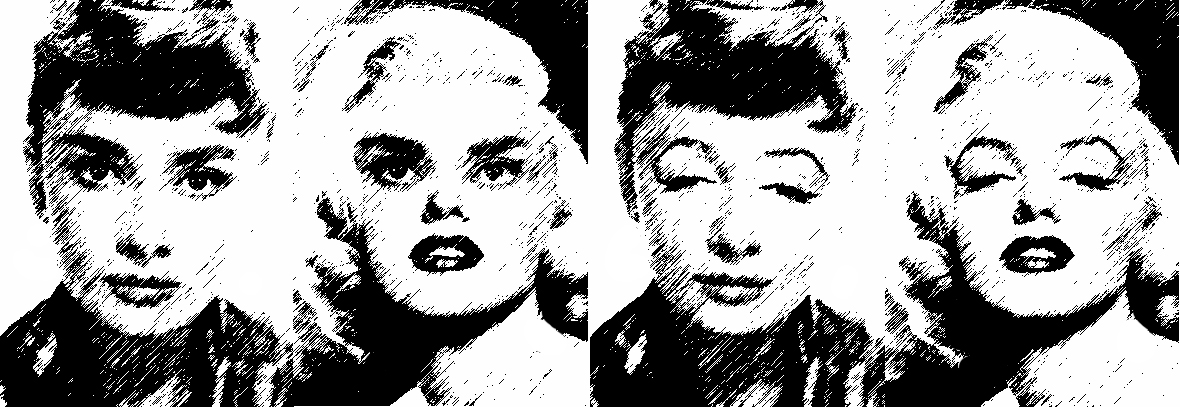
"Longitudinal Wollaston illusion using combined faces between Hepburn
and Monroe"
In the image of Audrey Hepburn (the leftmost one), she looks at us. If the eyes and brows of the image are copied and pasted into the image of Marilyn Monroe (the rightmost one), the combined face appears to gaze upward (the second one from the left). On the other hand, in the image of Marilyn Monroe (the rightmost one), she looks at us with a looking-down face. If the eyes and brows of the image are copied and pasted into the image of Audrey Hepburn (the leftmost one), the combined face appears to gaze downward (the second one from the right). These composite pictures are shown in Figure 4 of a 'face book' entitled "I want to obtain a loved face: the rules" written by Sayako UEDA in 2011.
Produced by Sayako Ueda 2011
上田彩子 (2011) 「恋顔」になりたい ~愛される顔にはルールがある~ 講談社 ISBN978-4-06-217064-2

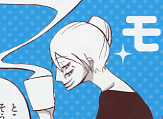 She is the first author of the paper to study the wobbling face illusion.
She is the first author of the paper to study the wobbling face illusion.
Ueda, S., Kitaoka, A., and Suga, T. (2011). Wobbling appearance of a face induced by doubled parts. Perception, 40, 751-756. new!
1.1c Effect of face eccentricity
(Maruyama-Endo-Todorović effect)
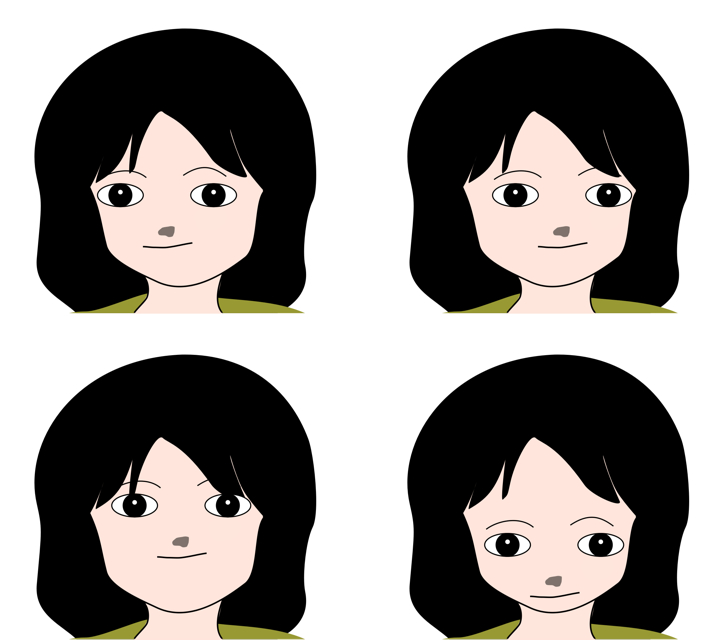
The person appears to gaze leftward (for the observer) in the upper-left face, rightward in the upper-right one, upward in the lower-left face, and downward in the lower-right one, though the facial parts and the relative position are constant.
Copyright Akiyoshi Kitaoka 2012 (January 15)
References
Maruyama, K. and Endo, M.: The effect of face orientation upon apparent direction of gaze. Tohoku Psychologica Folia, 42, 126-138, 1983
Todorović, D.: Geometrical basis of perception of gaze direction. Vision Research, 46, 3549-3562, 2006
1.1d Effect of nose direction
(Langton effect)
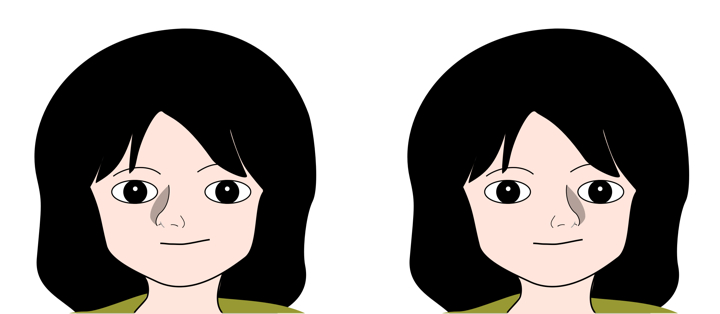
The left face appears to gaze more leftward (for the observer) than the right face, though both are the same except noses.
Copyright Akiyoshi Kitaoka 2012 (January 15)
References
Langton, S. R. H., Honeyman, H., and Tessler, E.: The influence of head contour and nose angle on the perception of eye-gaze direction. Perception & Psychophysics, 66, 752-771, 2004
1.1e Effect of nose direction: Vertical
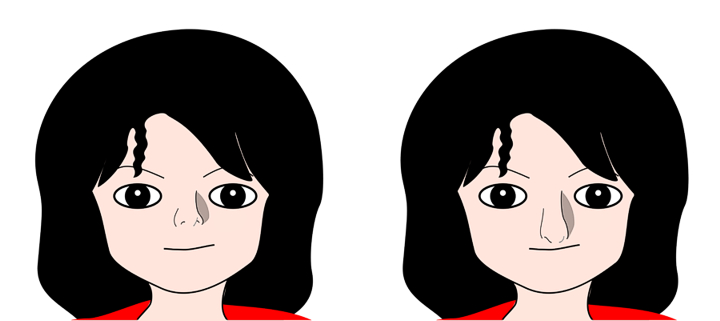
The left face appears to gaze more upward than the right face (?).
Copyright Akiyoshi Kitaoka 2012 (October 11)
1.1f Effect of mouth position
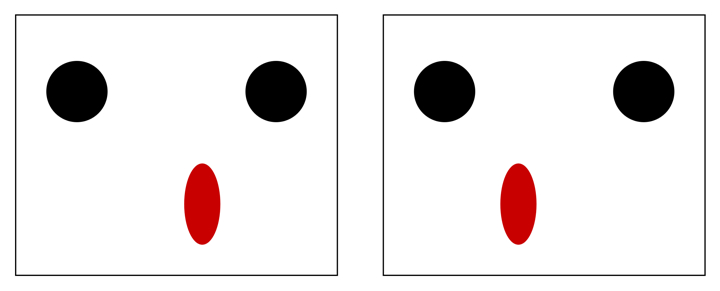
The left face appears to gaze rightward (for the observer) while the right face leftward.
Copyright Akiyoshi Kitaoka 2012 (October 11)
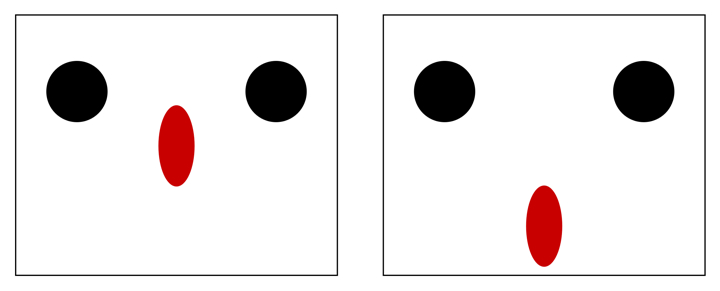
The left face appears to gaze more upward than the right one (?).
Copyright Akiyoshi Kitaoka 2012 (October 11)
1.2 Luminance-induced gaze shift
(Bloodshot illusion, Ando illusion)
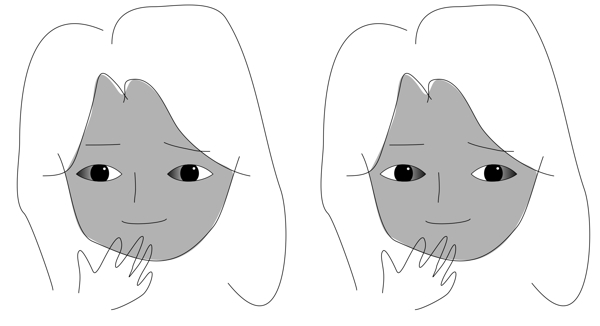
The luminance-induced gaze shift or the bloodshot illusion (Ando, 2002). Although the position of the iris and pupil in each eye's contour is the same among the two images, the apparent direction of gaze is shifted to the darkening part of the sclera (the white of the eye).
Copyright Akiyoshi Kitaoka 2010 (October 23)
References
Ando, S. and Osaka, N.: Bloodshot illusion: Luminance affects perceived gaze direction. Investigative Ophthalmology & Visual Science, 39(4), S172, 1998
Ando, S.: Luminance-induced shift in the apparent direction of gaze. Perception, 31, 657- 674, 2002
Ando, S.: Perception of gaze direction based on luminance ratio. Perception, 33, 1173-1184, 2004.
1.2b Luminance-induced gaze shift: Vertical
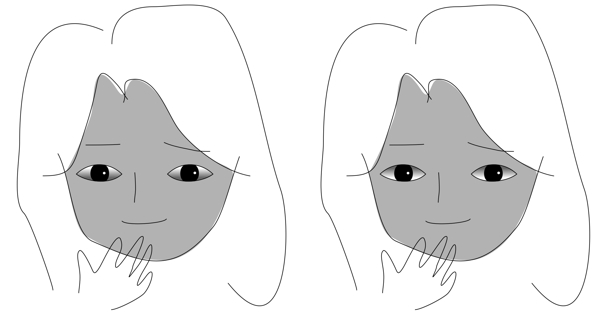
The left face appears to gaze more downward than the right one.
Copyright Akiyoshi Kitaoka 2010 (October 23)
References
北岡明佳 (2010) 顔の錯視の探索的研究―視線方向の錯視いろいろ 学際的研究による顔認知メカニズムの解明・第2回領域班会議(沖縄県那覇市沖縄県市町村自治会館・2010年12月23日~24日)ポスター発表 http://www.psy.ritsumei.ac.jp/~akitaoka/kaoninchi2010.html
北岡明佳 (2012) 顔の錯視のレビュー BRAIN and NERVE 神経研究の進歩, 64 (7) (増大特集 顔認知の脳内機構), 779-791. < Kitaoka, A. (2012). A review of face illusions. BRAIN and NERVE, 64(7), 779-791 (in Japanese with English abstract). >
1.3 Bogart illusion
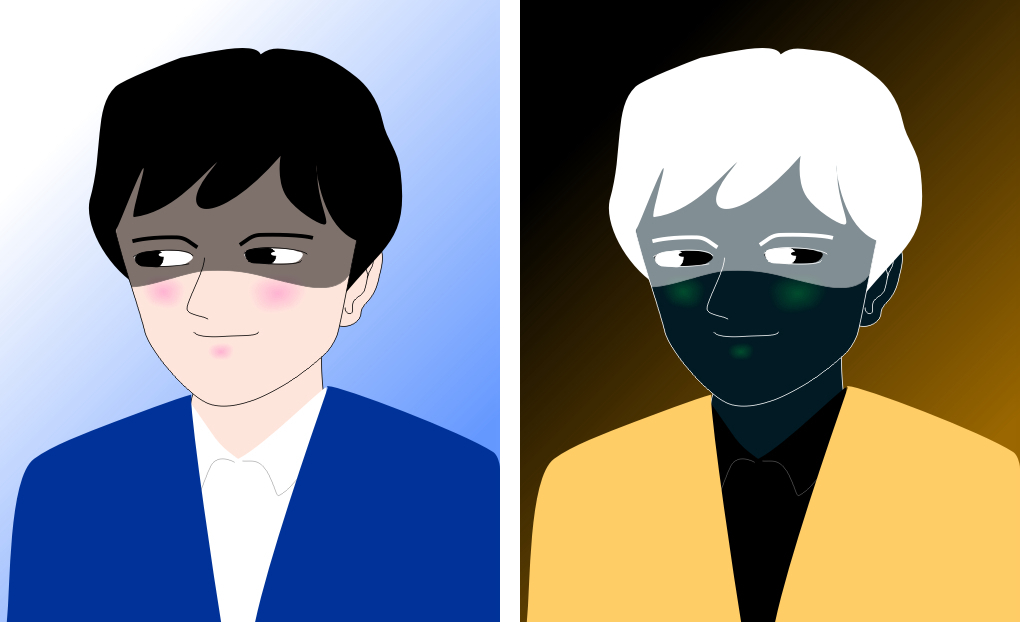
"Bogart illusion (Sinha, 2000) with a young man"
The left man appears to gaze rightward, while the left man, just the negative image of the right, appears to see toward us.
Copyright Akiyoshi Kitaoka 2009 (August 15)
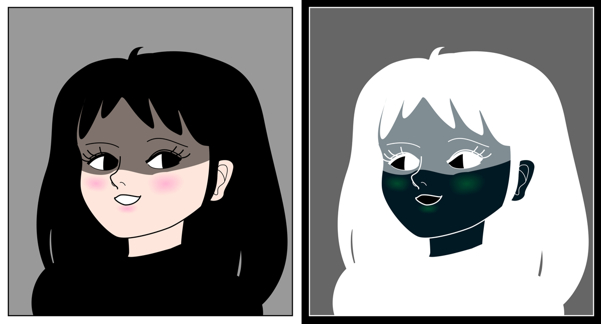
Copyright Akiyoshi Kitaoka 2012 (January 3)
References
Ricciardelli, P., Baylis, G. and Driver, J.: The positive and negative of human expertise in gaze perception. Cognition, 77, B1-B14, 2000
Sinha, P.: Here's looking at you, kid. Perception, 29, 1005-1008, 2000
Is this the Bogart illusion?

1.4 Eye shadow-induced gaze shift
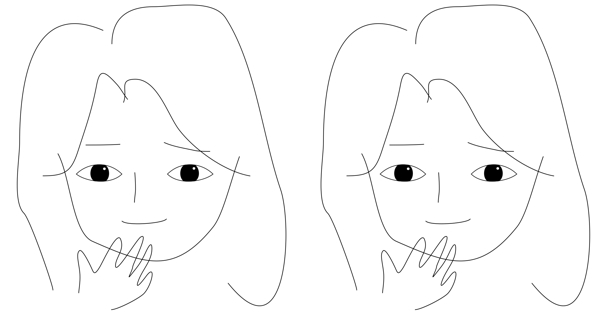
↓
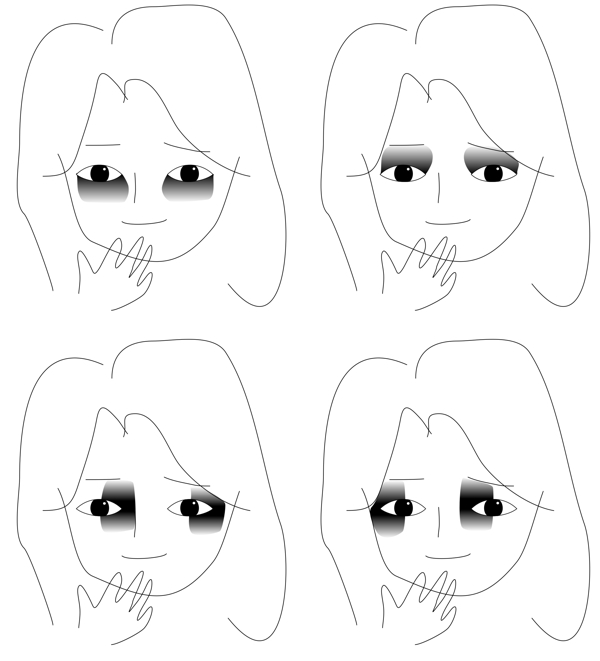
Copyright Akiyoshi Kitaoka 2010 (December 12)
The person appears to gaze upward in the upper-left face, downwards in the upper-right one, leftward (for the observer) in the lower-left face, and rightward in the lower-right one, though the faces are the same exept eye shadows. That is, the appparent eye direction is shifted AGAINST eye shadows.

Gradation is not necessary.
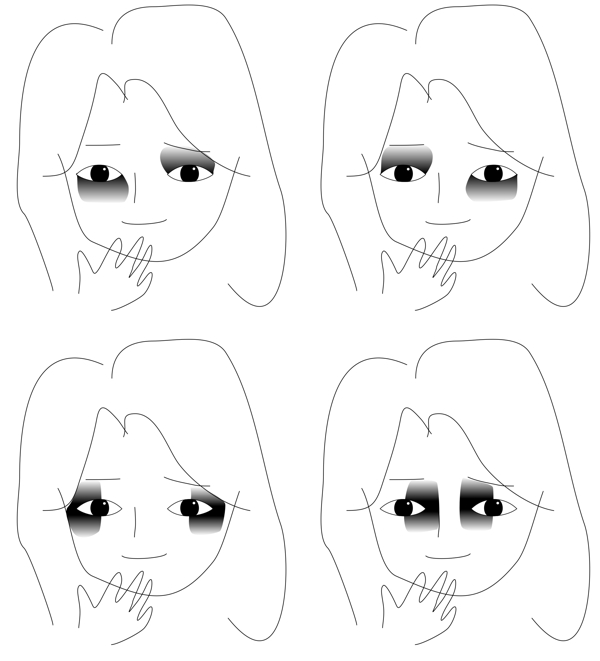
References
北岡明佳 (2010) 顔の錯視の探索的研究―視線方向の錯視いろいろ 学際的研究による顔認知メカニズムの解明・第2回領域班会議(沖縄県那覇市沖縄県市町村自治会館・2010年12月23日~24日)ポスター発表 http://www.psy.ritsumei.ac.jp/~akitaoka/kaoninchi2010.html
北岡明佳 (2012) 顔の錯視のレビュー BRAIN and NERVE 神経研究の進歩, 64 (7) (増大特集 顔認知の脳内機構), 779-791. < Kitaoka, A. (2012). A review of face illusions. BRAIN and NERVE, 64(7), 779-791 (in Japanese with English abstract). >
北岡明佳 (2012) 顔の錯視 日本顔学会誌, 12(1), 9-19.
1.4b Bright eye shadow-induced gaze shift
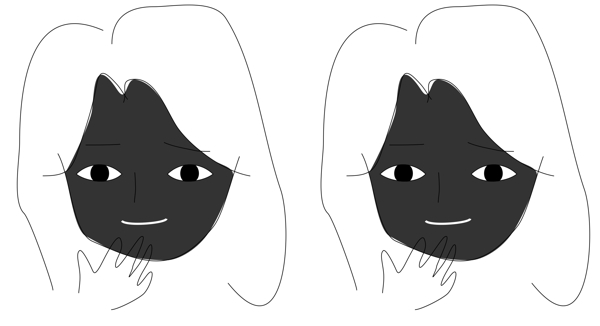
↓
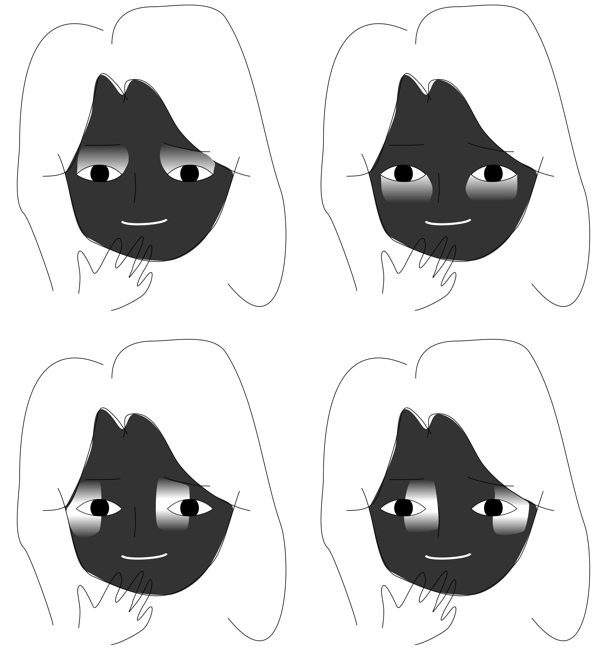
Copyright Akiyoshi Kitaoka 2010 (December 12)
The person appears to gaze upward in the upper-left face, downwards in the upper-right one, leftward (for the observer) in the lower-left face, and rightward in the lower-right one, though the faces are the same exept eye shadows. That is, the appparent eye direction is shifted TOWARD eye shadows.
References
北岡明佳 (2010) 顔の錯視の探索的研究―視線方向の錯視いろいろ 学際的研究による顔認知メカニズムの解明・第2回領域班会議(沖縄県那覇市沖縄県市町村自治会館・2010年12月23日~24日)ポスター発表 http://www.psy.ritsumei.ac.jp/~akitaoka/kaoninchi2010.html
北岡明佳 (2012) 顔の錯視のレビュー BRAIN and NERVE 神経研究の進歩, 64 (7) (増大特集 顔認知の脳内機構), 779-791. < Kitaoka, A. (2012). A review of face illusions. BRAIN and NERVE, 64(7), 779-791 (in Japanese with English abstract). >
"Comfortable Mona Lisa and uncomfortable Mona Lisa"
Mona Lisa appears to be comfortable when white eye shadows are painted over the eyes, whereas she appears to be uncomfortable when they are drawn under the eyes.
Produced Akiyoshi Kitaoka 2012 (June 2)
1.4c Dark and Bright eye shadow-induced gaze shift
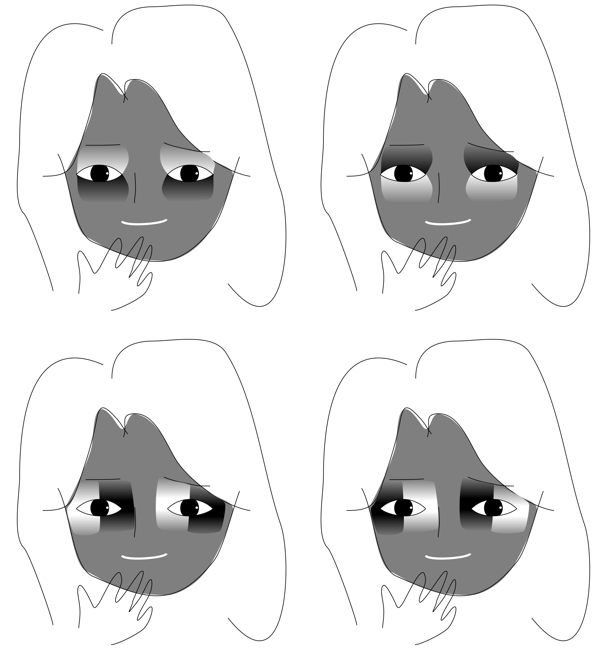
The person appears to gaze upward in the upper-left face, downwards in the upper-right one, leftward (for the observer) in the lower-left face, and rightward in the lower-right one, though the faces are the same exept eye shadows
Copyright Akiyoshi Kitaoka 2010 (December 12)
1.5 Eye liner-induced gaze shift
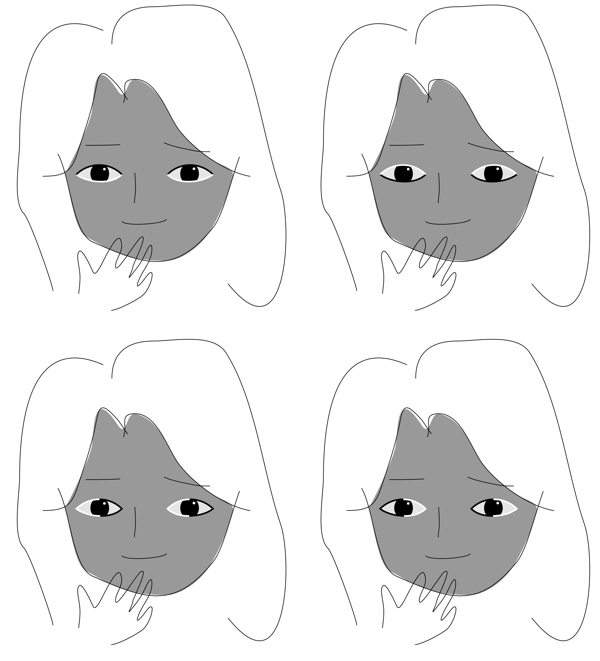
The person appears to gaze upward in the upper-left face, downwards in the upper-right one, leftward (for the observer) in the lower-left face, and rightward in the lower-right one, though the faces are the same exept eye shadows
Copyright Akiyoshi Kitaoka 2010 (December 12)
References
北岡明佳 (2010) 顔の錯視の探索的研究―視線方向の錯視いろいろ 学際的研究による顔認知メカニズムの解明・第2回領域班会議(沖縄県那覇市沖縄県市町村自治会館・2010年12月23日~24日)ポスター発表 http://www.psy.ritsumei.ac.jp/~akitaoka/kaoninchi2010.html
北岡明佳 (2012) 顔の錯視のレビュー BRAIN and NERVE 神経研究の進歩, 64 (7) (増大特集 顔認知の脳内機構), 779-791. < Kitaoka, A. (2012). A review of face illusions. BRAIN and NERVE, 64(7), 779-791 (in Japanese with English abstract). >
1.6 Effect of relative position of irises, pupils and Purkinje-Sanson images
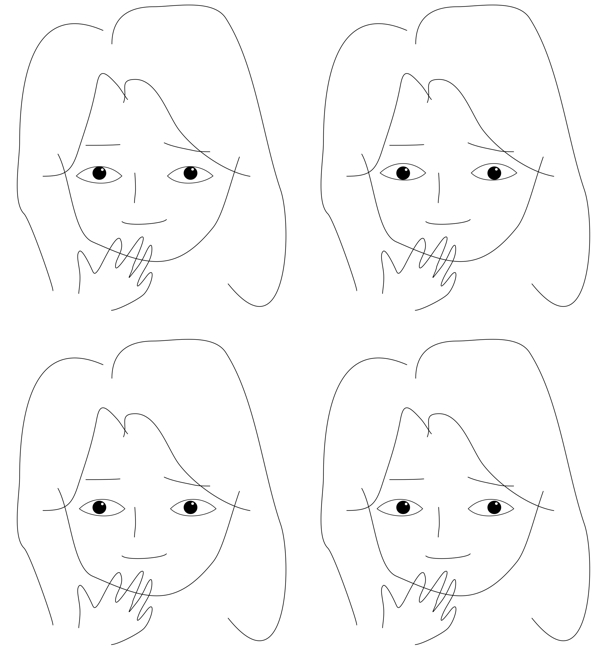
<Only eye contours are shifted in position>
The person appears to gaze upward in the upper-left face, downwards in the upper-right one, leftward (for the observer) in the lower-left face, and rightward in the lower-right one, though the faces are the same exept eye shadows
Copyright Akiyoshi Kitaoka 2010 (December 12)
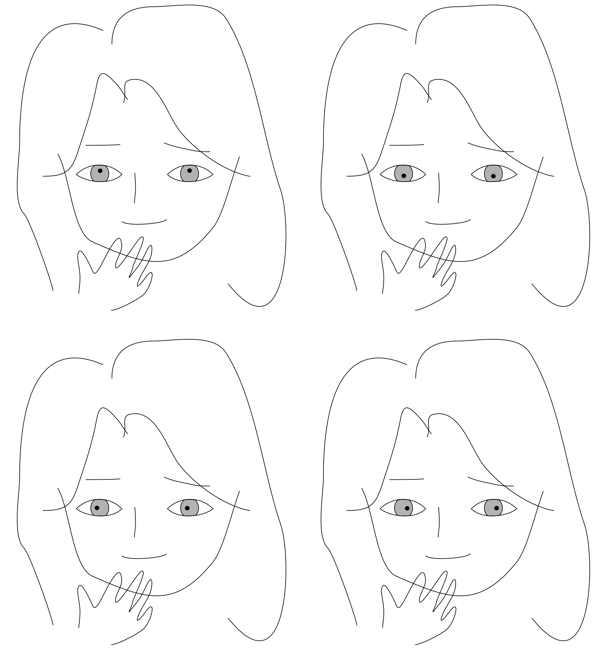
<Only pupils are shifted in position>
The person appears to gaze upward in the upper-left face, downwards in the upper-right one, leftward (for the observer) in the lower-left face, and rightward in the lower-right one, though the faces are the same exept eye shadows
Copyright Akiyoshi Kitaoka 2010 (November 6)
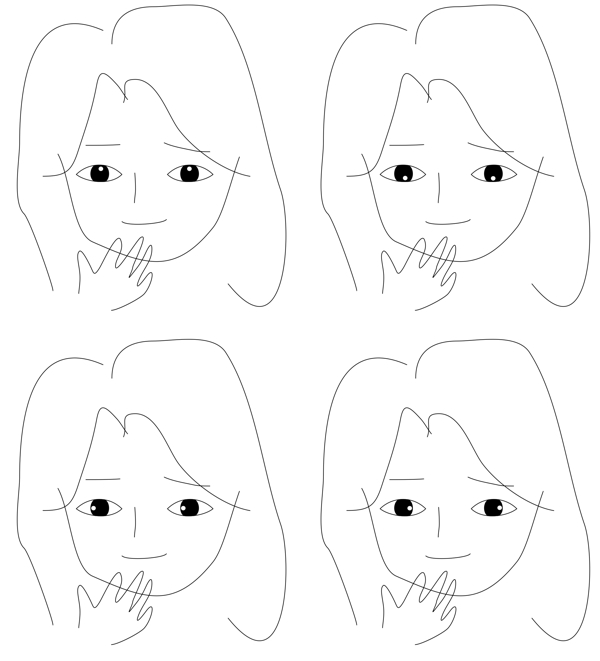
<Only Purkinje-Sanson images are shifted in position>
The person appears to gaze upward in the upper-left face, downwards in the upper-right one, leftward (for the observer) in the lower-left face, and rightward in the lower-right one, though the faces are the same exept eye shadows
Copyright Akiyoshi Kitaoka 2010 (November 6)
1.7 Iris rotation-dependent gaze shift or spiral illusion-dependent one?
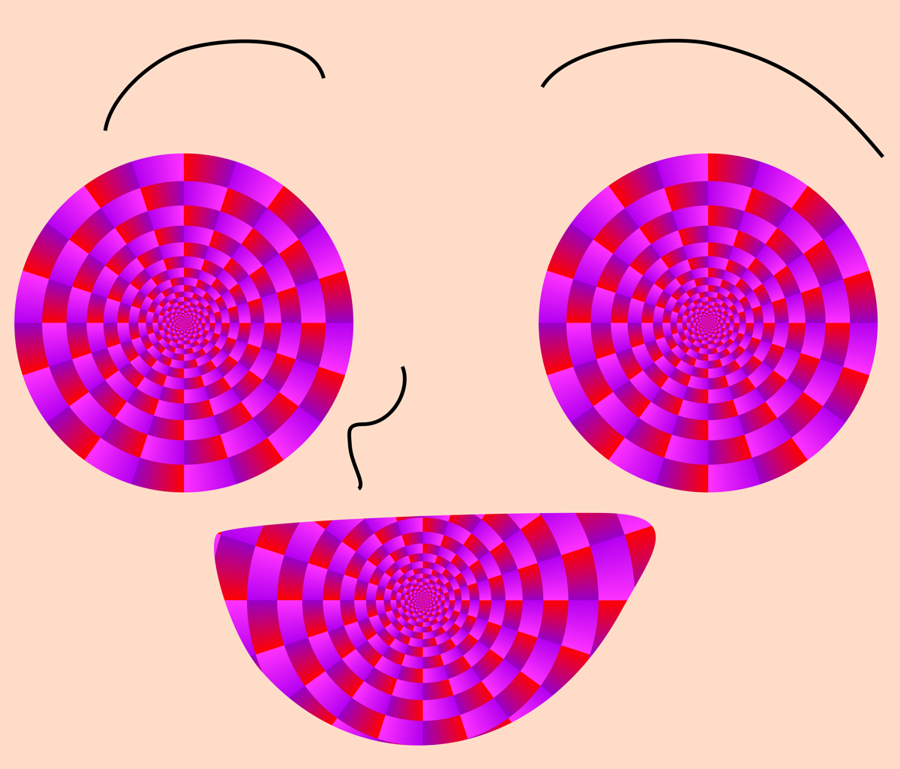
"Face with red
eyes"
Eyes and the mouth appear to rotate clockwise. Moreover, the face appears to gaze toward the observer or rightward.
Copyright Akiyoshi Kitaoka 2012 (October 9)
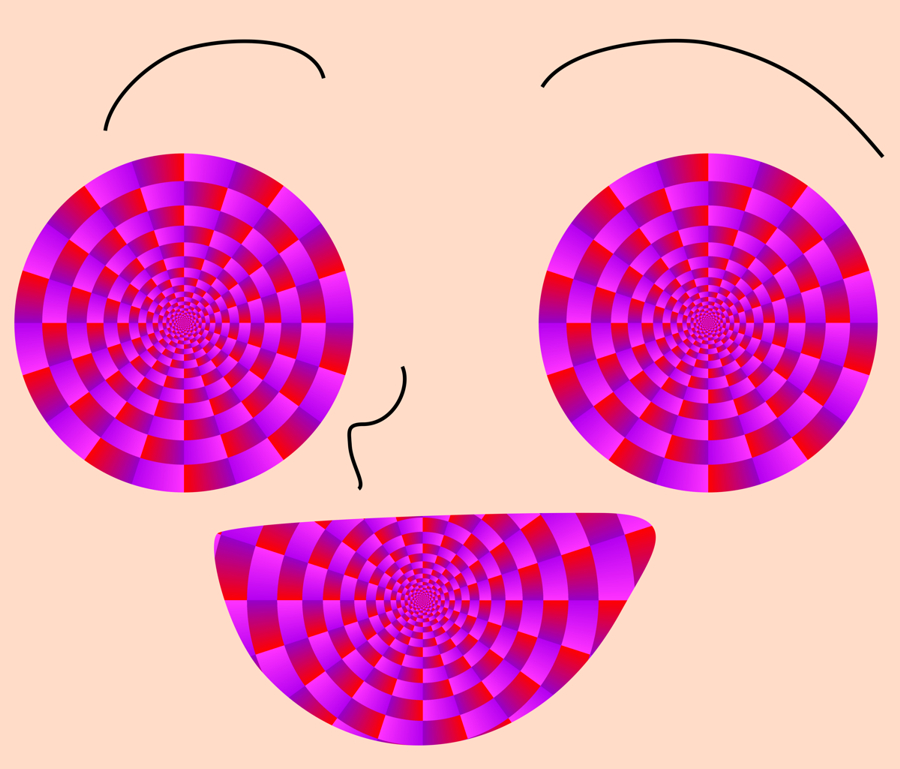
"Face with red eyes"
Eyes appear to rotate counterclockwise while the mouth clockwise. Moreover, the face appears to gaze leftward.
Copyright Akiyoshi Kitaoka 2012 (October 9)
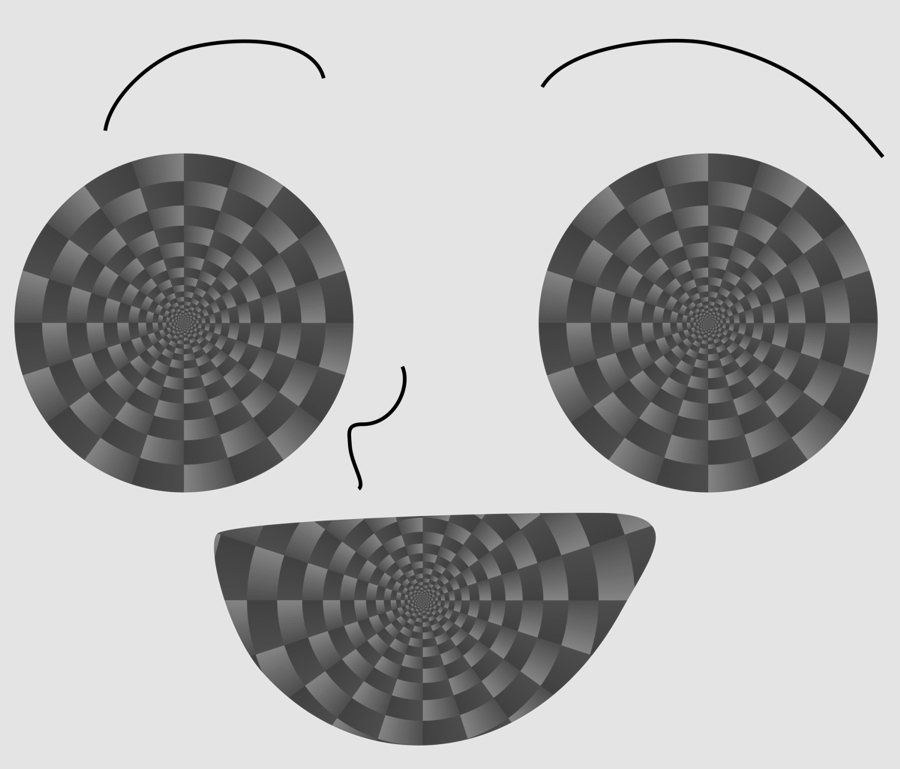
Less gaze illusion (Gray-scale image of the first one)
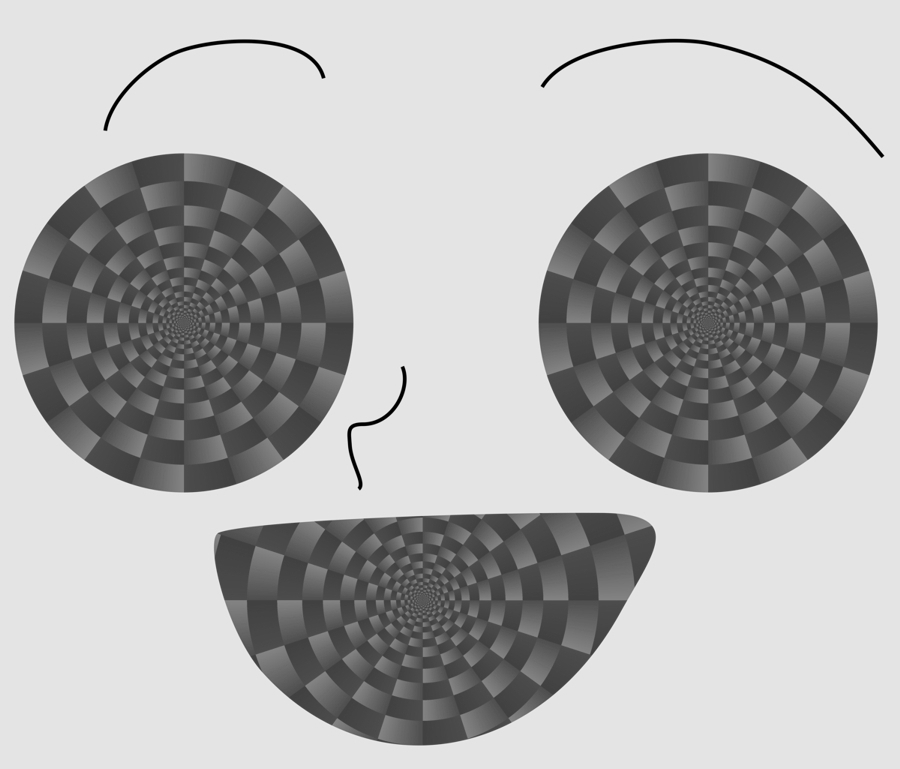
Less gaze illusion (Gray-scale image of the first one)
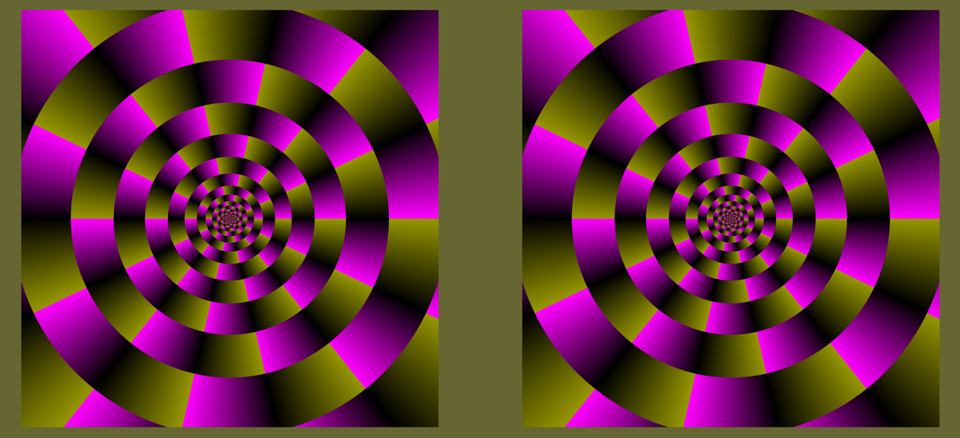
The 'eyes' might appear to gaze rightward.
Copyright Akiyoshi Kitaoka 2012 (October 12)
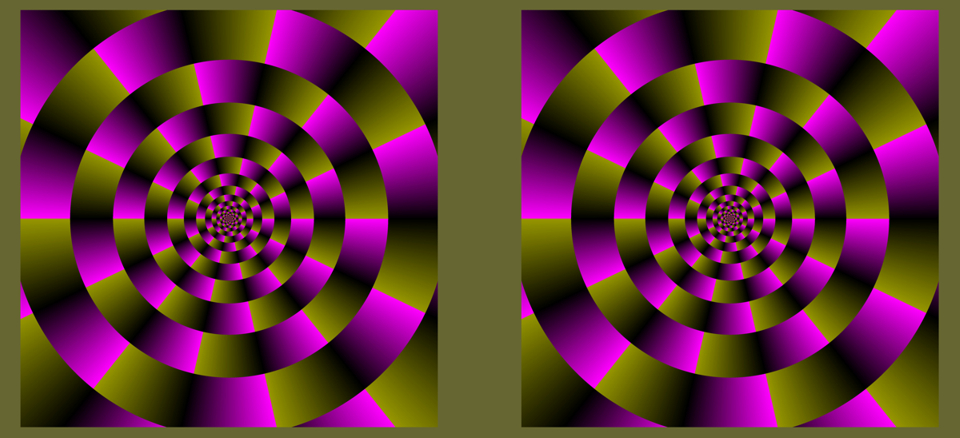
The 'eyes' might appear to gaze leftward.
Copyright Akiyoshi Kitaoka 2012 (October 12)
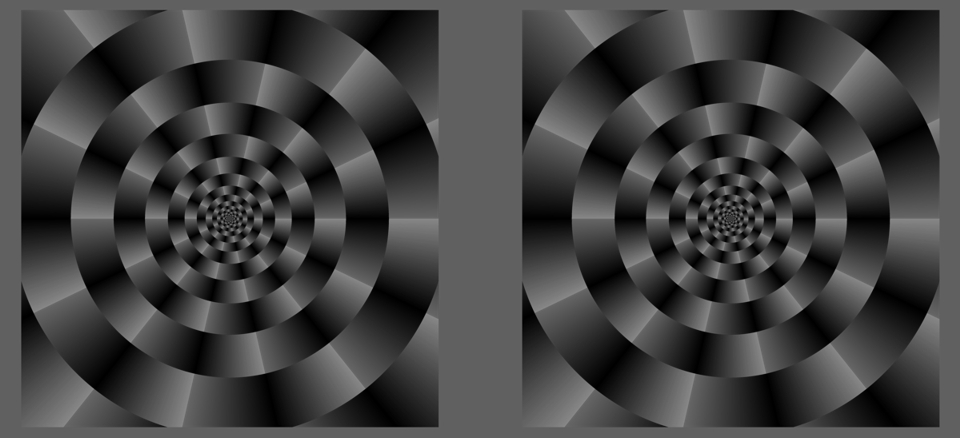
Less gaze illusion (Gray-scale image of the first one)
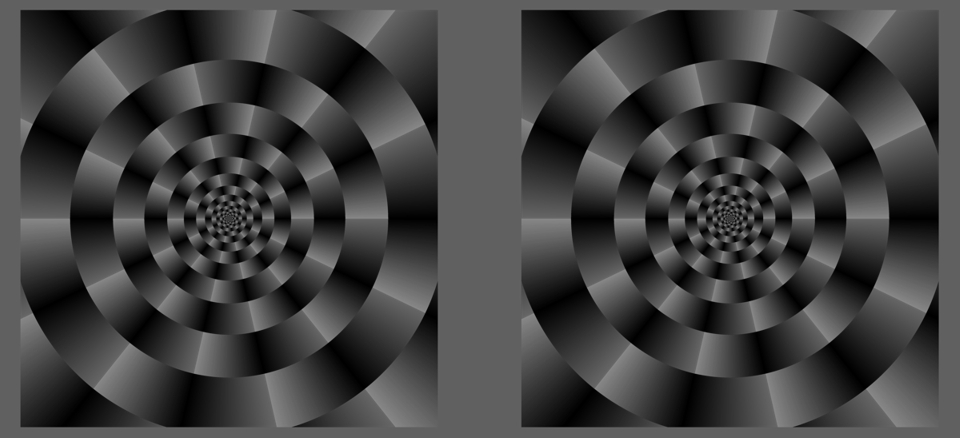
Less gaze illusion (Gray-scale image of the first one)
Little gaze illusion?
Copyright Akiyoshi Kitaoka 2012 (October 11)
Little gaze illusion?
Copyright Akiyoshi Kitaoka 2012 (October 11)
How about spirals?
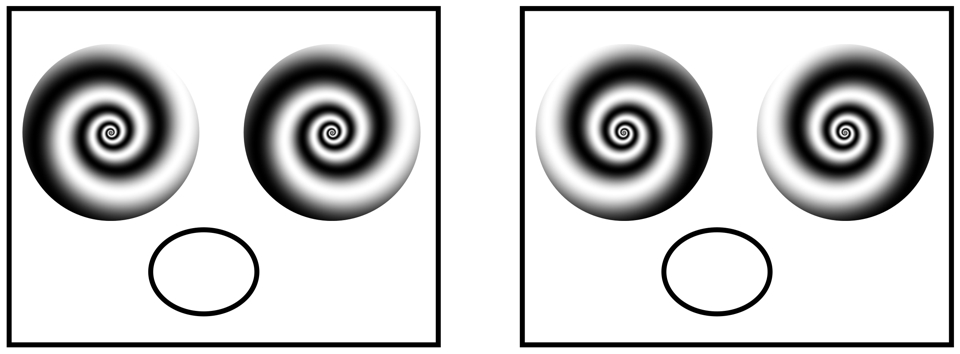
The left face appears to gaze rightward (for the observer), while the right face leftward.
Copyright Akiyoshi Kitaoka 2012 (October 12)

The leftmost face appears to gaze rightward (for the observer), the middle one leftward and downward if recognized, and the rightmost face appears to gaze rightward slightly.
Copyright Akiyoshi Kitaoka 2012 (October 12)
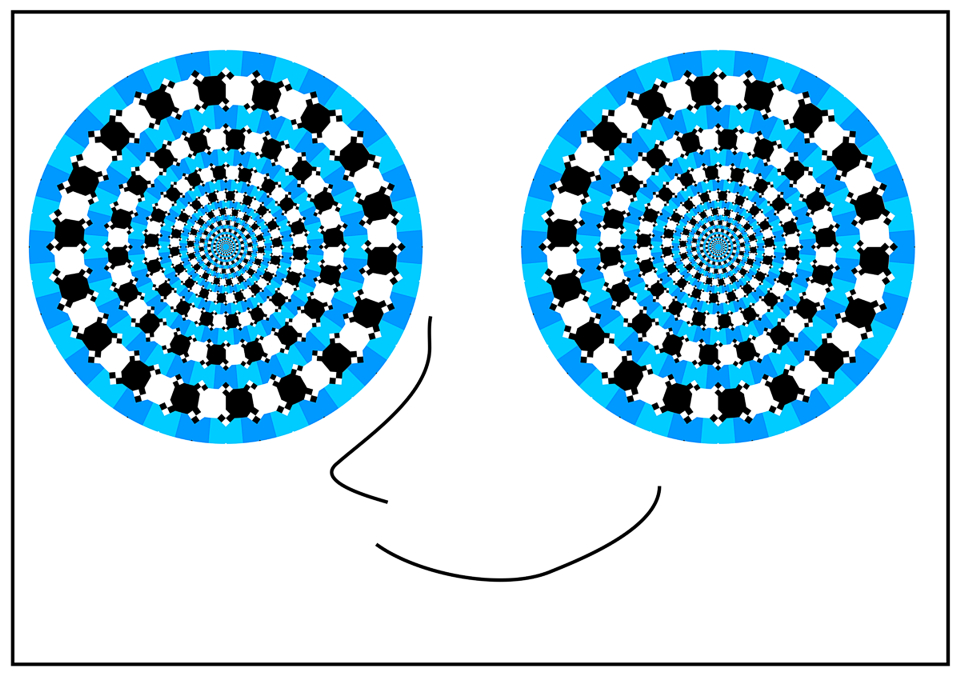
"Spiral gaze 1"
The face appears to gaze leftward (for the observer). Concentric circles appear to be spirals that approach the center rotating counterclockwise.
Copyright Akiyoshi Kitaoka 2012 (October 12)
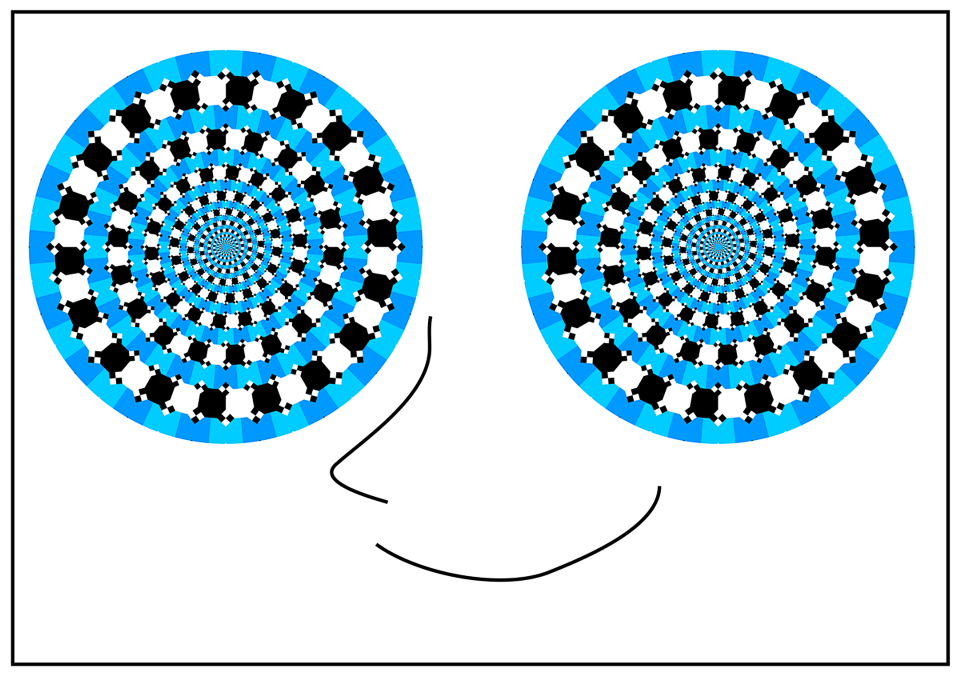
"Spiral gaze 2"
The face appears to gaze toward the observer or rightward. Concentric circles appear to be spirals that approach the center rotating clockwise.
Copyright Akiyoshi Kitaoka 2012 (October 12)
1.8 Mona Lisa effect
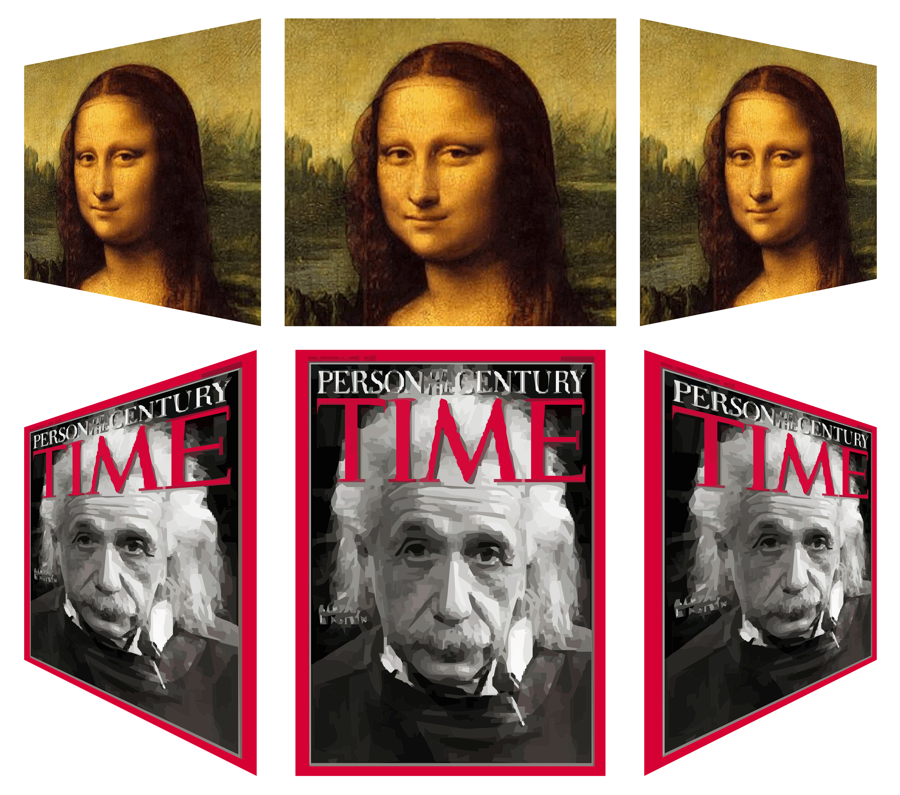
Apparent eye direction of a person in a picture tends to be constant even if the image is tilted in depth (Maruyama, Endo and Sakurai, 1985).
References
Anstis, S. M., Mayhew, J. W., and Morley, T.: The perception of where a face or television ‘portrait’ is looking. American Journal of Psychology, 82, 474-489, 1969
Boyarskaya, E., Hecht, H., and Kitaoka, A.: When does the Monalisa effect break down? Perception, 40, ECVP Abstract Supplement, page 221, 2011
Bruce, V. and Young, A.: In the eye of the beholder: The science of face perception. Oxford University Press, Oxford, 1998
Maruyama K., Endo, M., and Sakurai, K.: An experimental consideration on “Mona Lisa gaze effect”. Tohoku Psychologica Folia, 44, 109-121, 1985
Todorović, D.: The effect of face eccentricity on the perception of gaze direction. Perception, 38, 109-132, 2009
1.8b Anti Mona Lisa effect
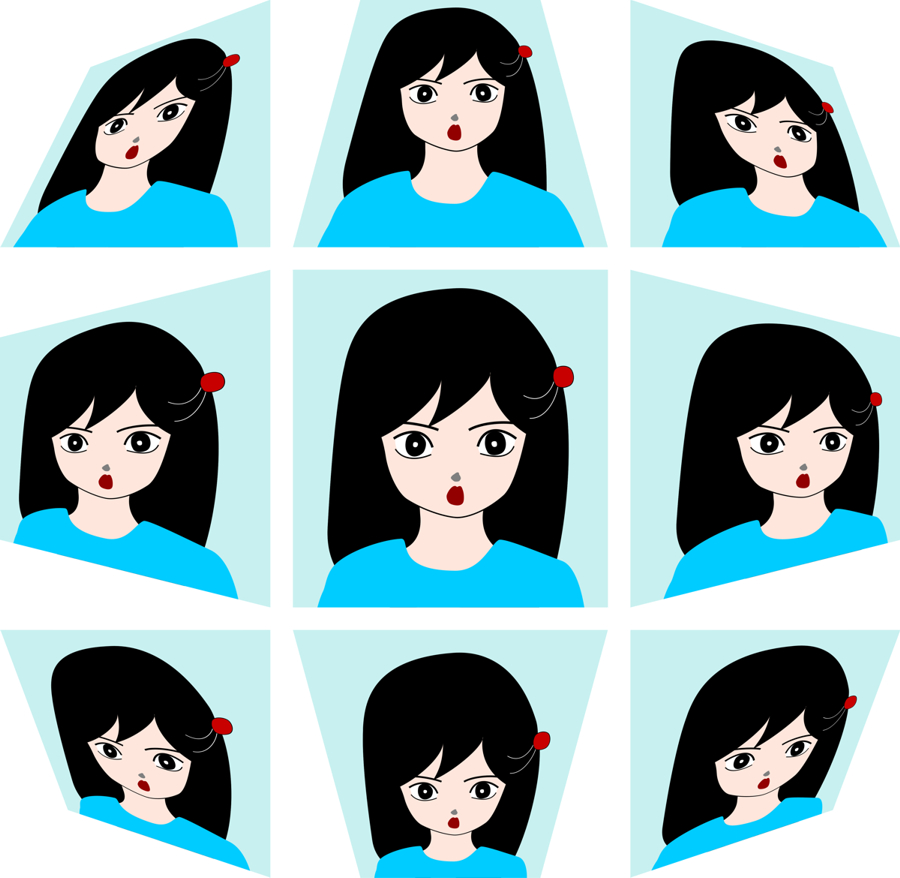
Apparent eye direction is changed according to distortion.
Copyright Akiyoshi Kitaoka 2012 (October 11)
1.9 Overshoot of gaze
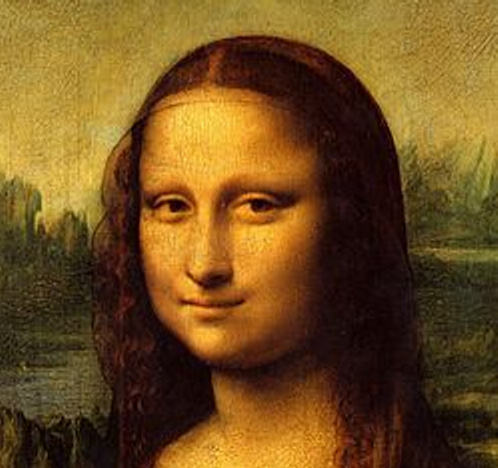
Mona Lisa may just look at the observer, but her gaze appears to head for observer's right shoulder.
References
Cline, M. G.: The perception of where a person is looking. American Journal of Psychology, 80, 41-50, 1967
Gibson, J. J. and Pick, A. D.: Perception of another person’s looking behavior. American Journal of Psychology, 76, 386-394, 1963
佐藤隆夫・赤木章信・繁桝博昭:「目があう」ってほんとかしら 電子情報通信学会技術研究報告, HIP, ヒューマン情報処理, 98(276), 23-30, 1998
1.10 Asymmetry of gaze
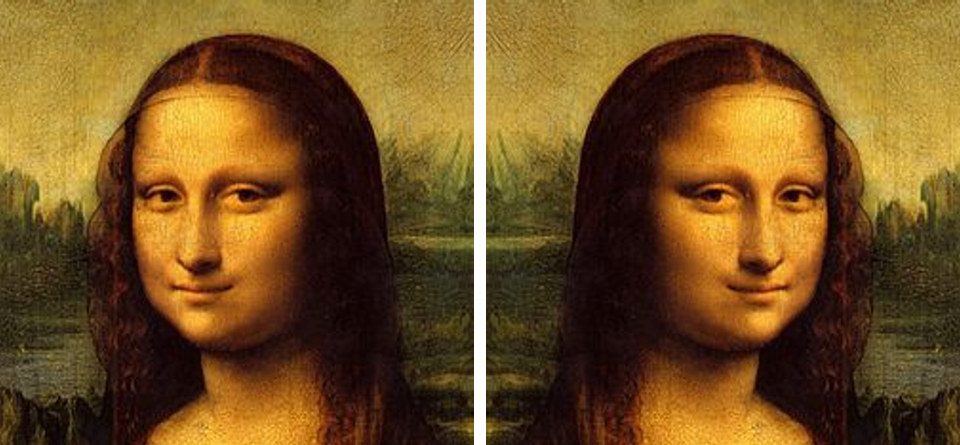
"Mona Lisa eye-direction asymmetry effect"
The right mirror-reversed Mona Lisa appears to gaze leftward more largely than the original does rightward.
Copyright Akiyoshi Kitaoka 2012 (August 3)
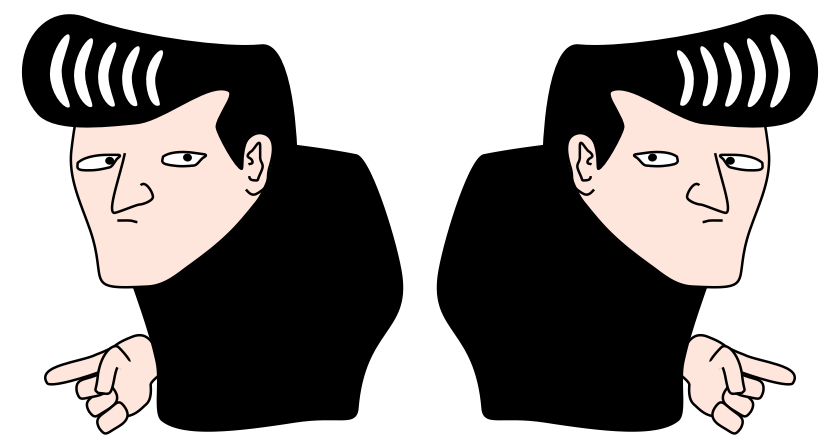
"To see or not to see"
The left face appears to gaze at the observer, while the right one, just the mirror image of the left one, appears to see the left side of the observer.
Copyright Akiyoshi Kitaoka 2012 (August 4)
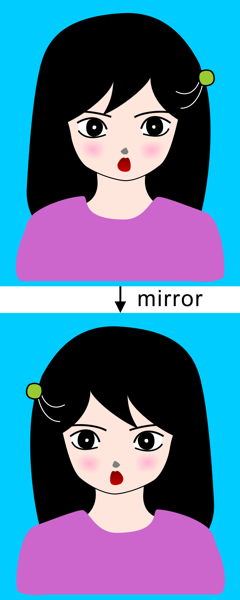
"Mirror-reversal-induced eye direction illusion"
(For Akiyoshi) The person in the upper image appears to gaze toward us, but its mirror image appears to see rightward for her. For some observers, the person in the upper image appears to gaze leftward for her, while its mirror image appears to look at us.
Copyright Akiyoshi Kitaoka 2010 (April 2)
References
Kitaoka, A. (2012). Asymmetry of perception of right vs. left eye directions. Talk in the Summer Meeting of the Vision Society of Japan, Yamagata University, Yonezawa, Japan, on August 7, 2012.
2. Illusion of face inversion
2.1 Thatcher illusion
Copyright Akiyoshi .Kitaoka 2008 (April 13)
References
Thompson, P. (1980) Margaret Thatcher: a new illusion. Perception, 9, 483-484.
2.2 Size underestimation of upright faces
"Upside-down face overestimation illusion"
The lower face appears to be larger than the upper one though they are identical in size.
Copyright Akiyoshi .Kitaoka 2007 (February 16)
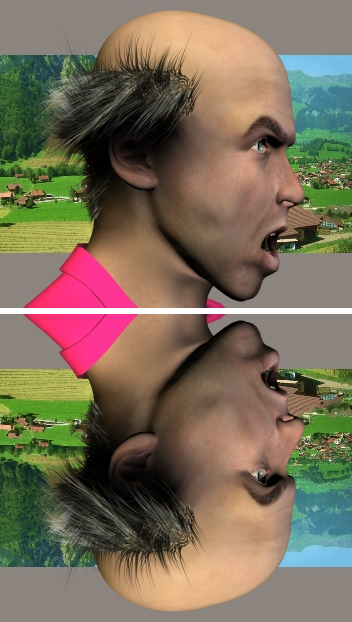
Poser 7 Simon G2
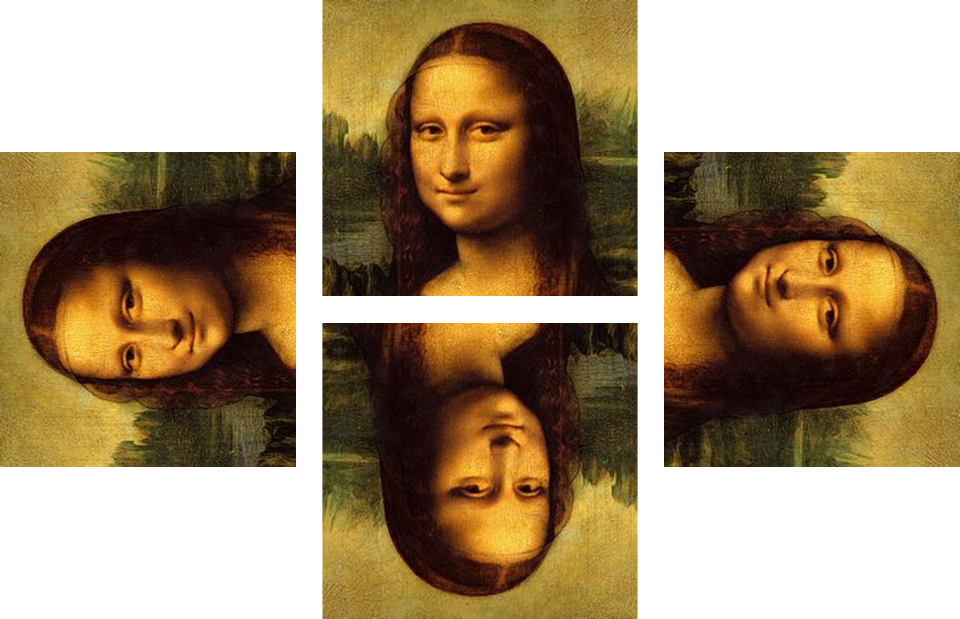
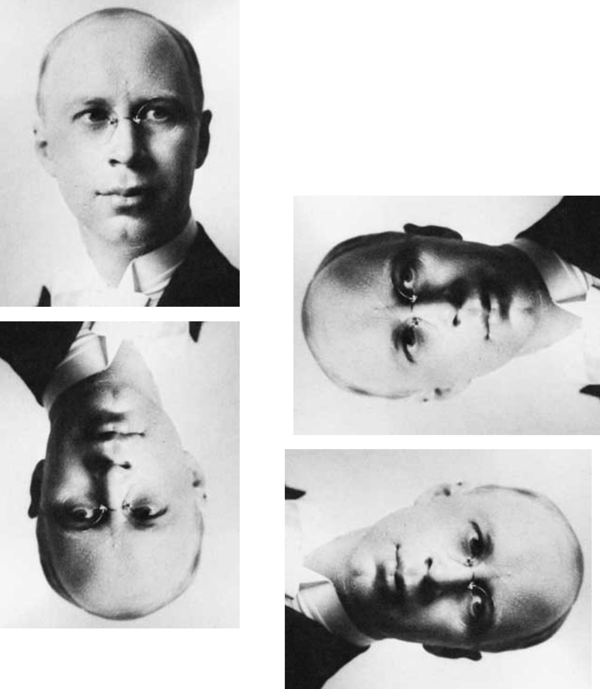
<The greatest composer Sergei Sergeyevich Prokofiev (1891-1953, Russia)>
References
Araragi, Y., Aotani, T., and Kitaoka, A. (2012). Evidence for a size underestimation of upright faces. Perception, 41, 840-853.
2.3 Fat face thin illusion
"The fat face thin (fft) illusion: Tokura version"
The left face appears to be fat, but its inverted one shown in the right does not appear to be fat so much.
Copyright
Hisayo TOKURA 2011
(uploaded February 12, 2012)
This image was drawn by Ms Hisayo Tokura for her graduation thesis and has been exhibited with her permission.
References
Peter Thompson (2010) http://illusioncontest.neuralcorrelate.com/2010/the-fat-face-thin-fft-illusion/
2.3b Size underestimation of upright faces and the Fat face thin illusion
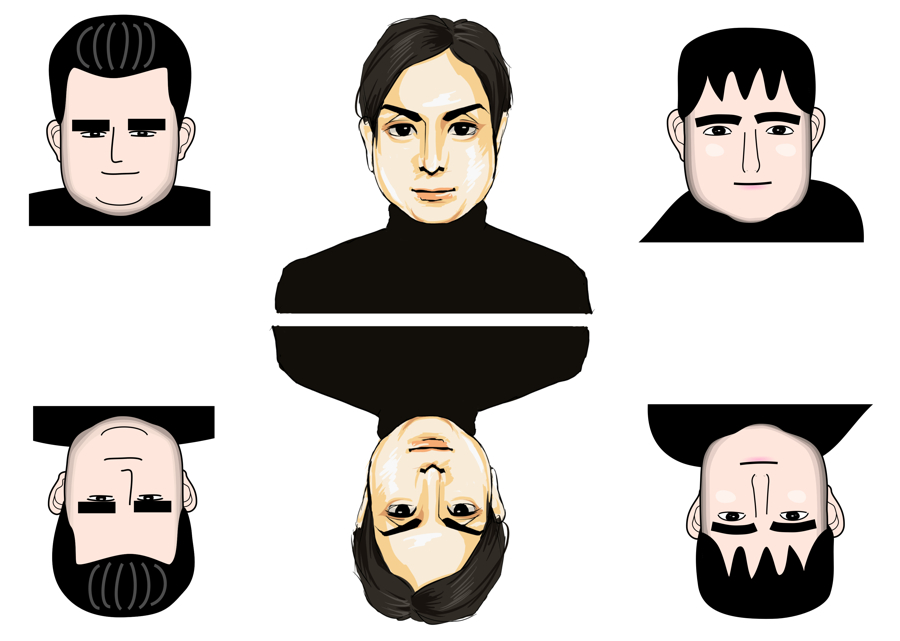
Copyright Akiyoshi Kitaoka 2012 (February 15)
The inverted faces appear to be less fat and larger than the upright ones.
References
Araragi, Y., Aotani, T., and Kitaoka, A. (2012). Evidence for a size underestimation of upright faces. Perception, 41, 840-853.
北岡明佳 (2012) 顔の錯視のレビュー BRAIN and NERVE 神経研究の進歩, 64 (7) (増大特集 顔認知の脳内機構), 779-791. < Kitaoka, A. (2012). A review of face illusions. BRAIN and NERVE, 64(7), 779-791 (in Japanese with English abstract). >
2.4 Nose shortening illusion (?)
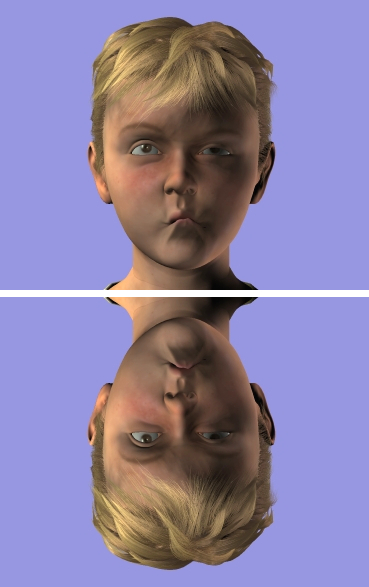
Poser 7
Ben Casual
"Nose length underestimation effect"
The nose in the upside-down face appears to be shorter than the upright original.
Copyright Akiyoshi Kitaoka 2010 (April 1)
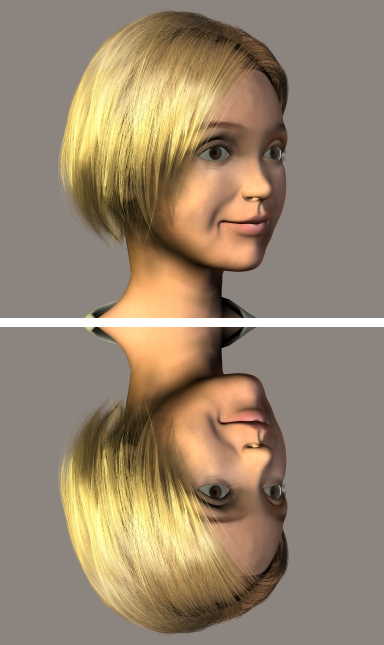
Poser 6 Kate
2.5 Face flattening effect (?)
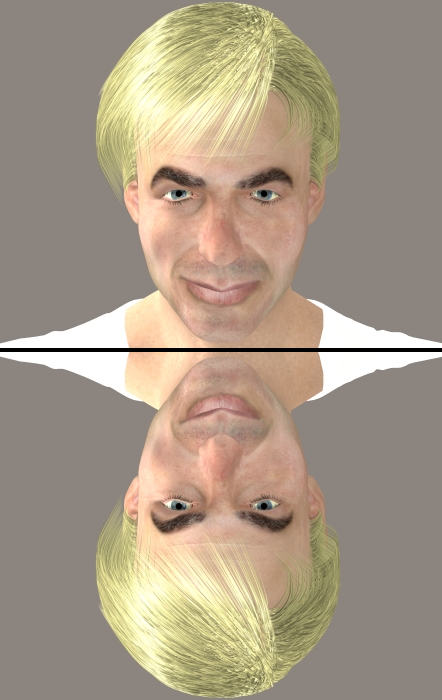
Poser 7 Simon G2
"Face flattening effect"
A face appears to be relatively flat onto a frontparallel plane when it is inverted. This is an idea proposed by Jasmina Stevanov on April 1, 2011.
Copyright Akiyoshi Kitaoka 2010 (April 1)
2.6 Sakasa-e
(kind of Trompe l'oiel, upside-down image)
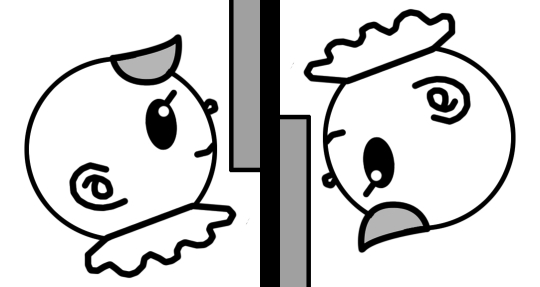
"A baby and a duck cook"
A baby appears to alternate with a duck cook.
Copyright
Sayako Ueda and Akiyoshi Kitaoka 2009 (September 21)
The original image was produced by Sayako Ueda
Thanks to So
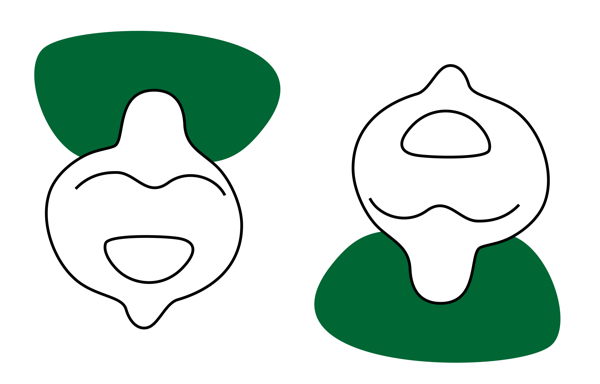
"Laughing turnip and a man looking up"
The turnip appears to alternate with a man looking up.
Copyright Akiyoshi Kitaoka 2012 (August 19)
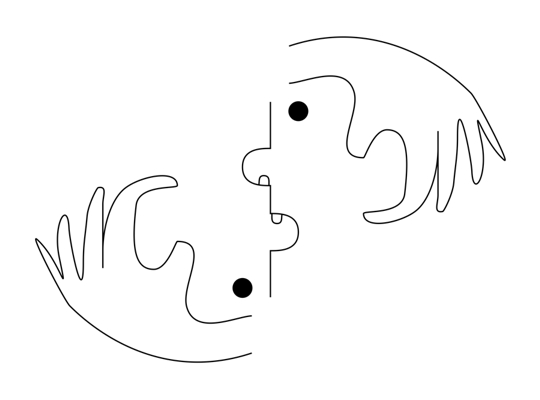
"Twins who were going to eat a candy and dropped it "
If this image is rotated through 180 degrees, just the same image is seen.
Copyright Akiyoshi .Kitaoka 2011 (August 10)
3. Geometrical illusion of face
3.1 Endo's eye interval illusion
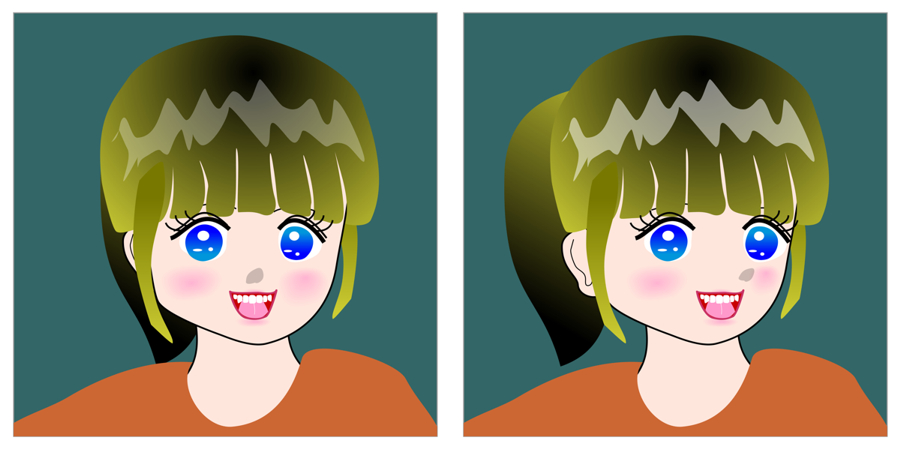
"Eye interval illusion"
The interval of both eyes in the left face appears to be shorter than that of the right faces, though they are the same distance.
Copyright Akiyoshi Kitaoka 2011 (December 6)
I have discovered this
illusion in an image drawn by Professor Mitsuo Endo, University of the Ryukyus,
Japan.
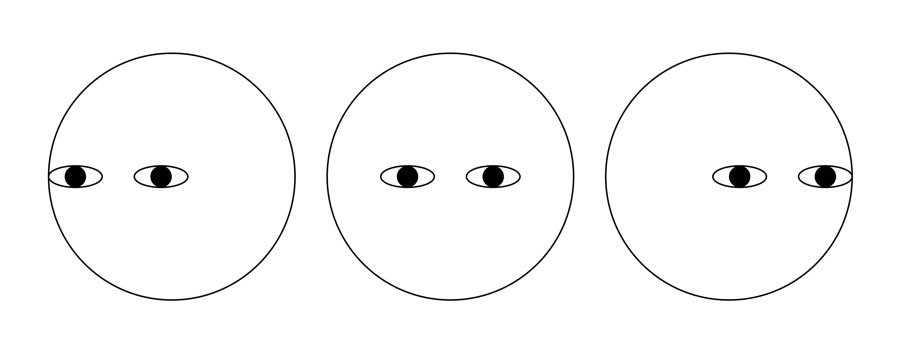
Professor Endo's image (personal communication)
cf.
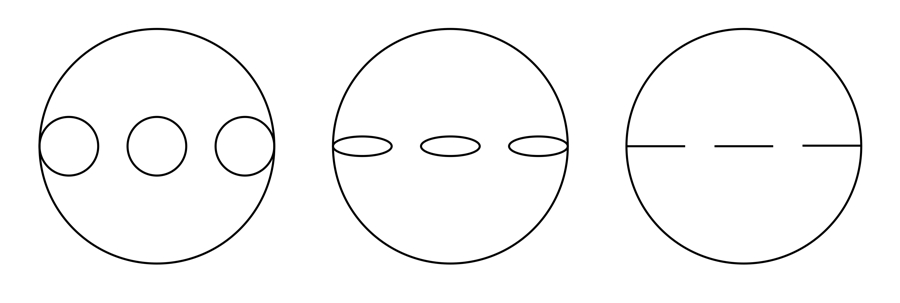
"Endo's size
illusion"
In each circle, the middle part appears to be smaller or shorter than the rest, though they are of the same size.
Copyright Akiyoshi Kitaoka 2011 (December 5)
![]() Professor Mitsuo Endo, University of the Ryukyus,
discovered this illusion.
Professor Mitsuo Endo, University of the Ryukyus,
discovered this illusion.
![]() This illusion cannot be
explained with Kanizsa amodal expansion.
This illusion cannot be
explained with Kanizsa amodal expansion.
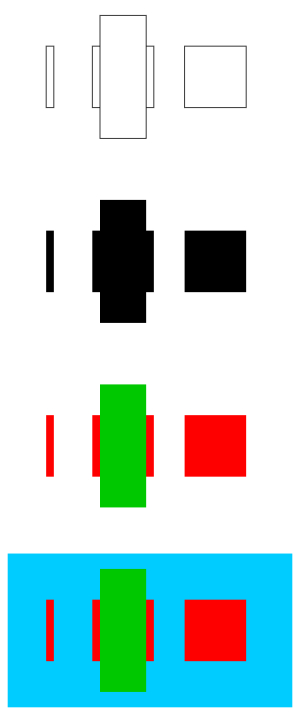
amodal expansion and amodal
shrinkage
3.2 Overestimation of the farther eye
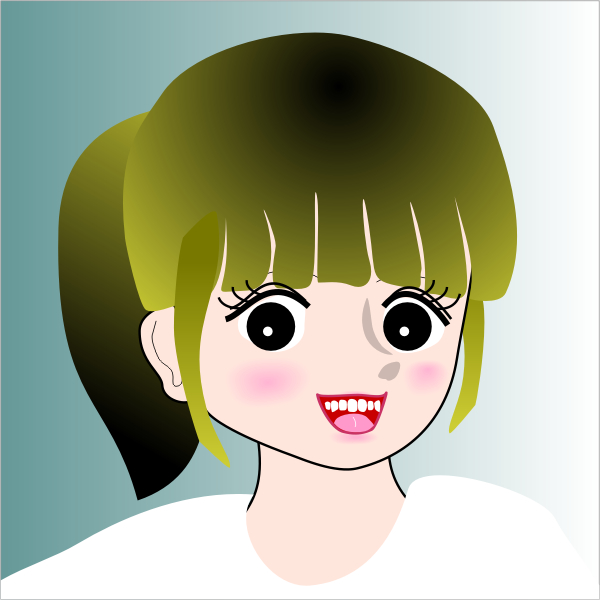
"Overestimation of the farther eye"
The left eye appears to larger than the right one, though they are the same size.
Copyright Akiyoshi Kitaoka 2009 (August 15)
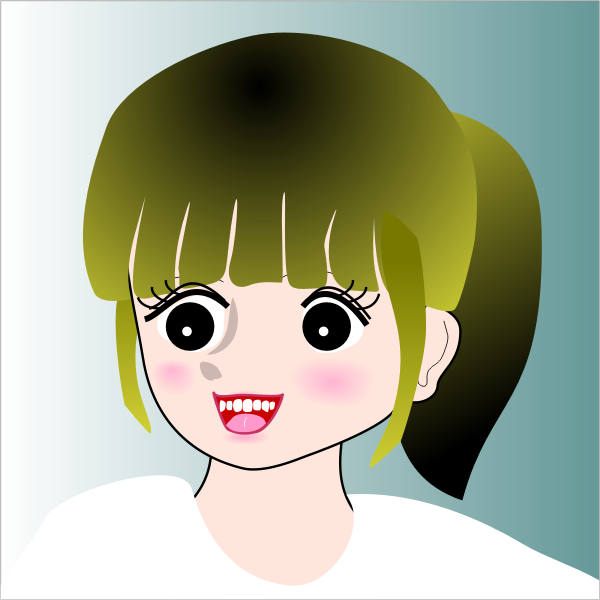
The right eye appears to larger than the left one, though they are the same size. These eyes are the same as those in the image above.

The proportion of both eyes appears to be different between the two faces. The right one appears to be unnatural.
Copyright Akiyoshi Kitaoka 2012 (July 3)
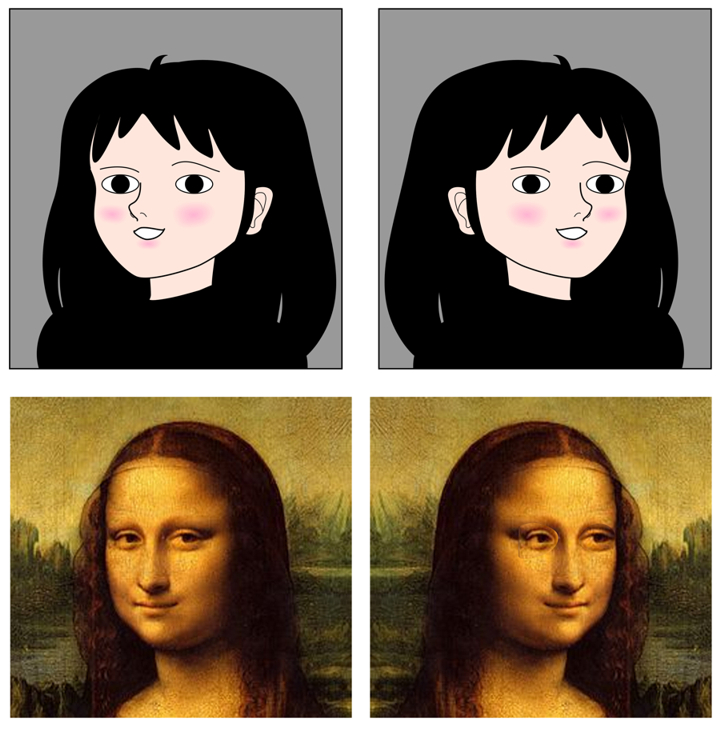
The proportion of both eyes appears to be different between the two faces. The right one appears to be unnatural.
Copyright Akiyoshi Kitaoka 2012 (January 9)
References
北岡明佳 (2012) 顔の錯視のレビュー BRAIN and NERVE 神経研究の進歩, 64 (7) (増大特集 顔認知の脳内機構), 779-791. < Kitaoka, A. (2012). A review of face illusions. BRAIN and NERVE, 64(7), 779-791 (in Japanese with English abstract). >
3.3 Lee-Freire illusion
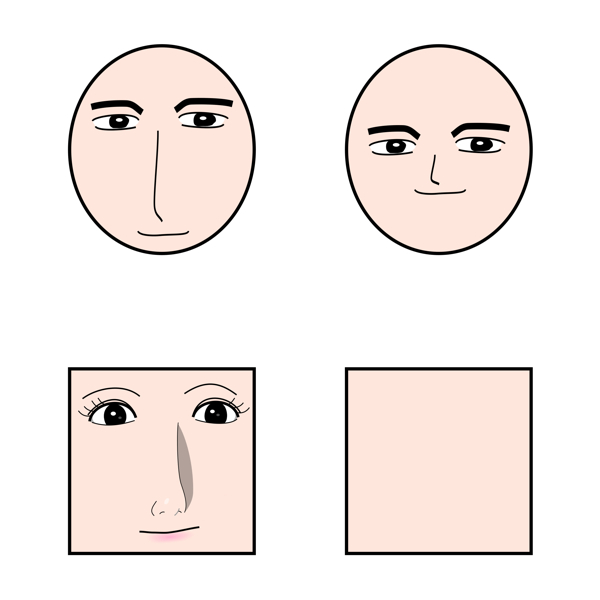
Facial parts make the contour appear to be elongated vertically.
References
Lee, K. and Freire, A.: Effects of face configuration change on shape perception: A new illusion. Perception, 28, 1217-1226, 1999
安田孝:顔の形状知覚における布置情報の影響 心理学研究, 76, 131-138, 2005
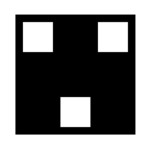
"Face square"
The square contour appears to be elongated along the vertical axis of a face.
Copyright Akiyoshi Kitaoka 2010 (April 3)
3.4 Overestimation of the eye-eye interval relative to the eye-mouth interval
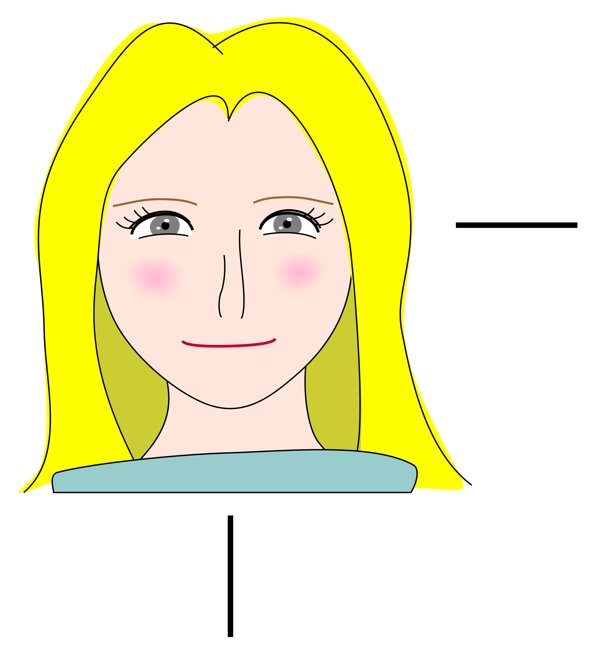
The interval between the pupils appears to be shorter than the distance between the eyes and mouth, though they are the same in length.
References
Schwaninger, A., Ryf, S., and Hofer, F.: Configural information is processed
differently in perception and recognition of faces. Vision Research, 43,
1501-1505, 2003
3.5 Yang's iris illusion
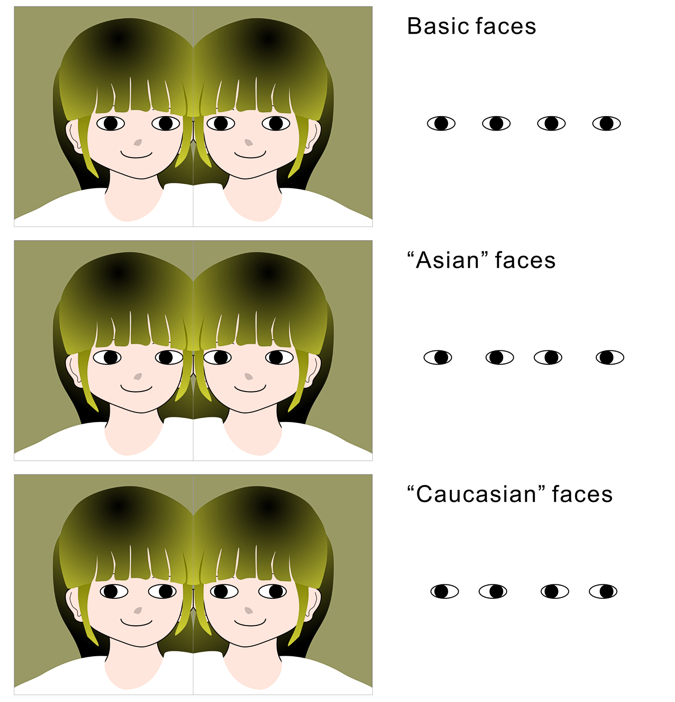
"An illustration of Yang's iris illusion"
The four irises are placed with the same interval. When each iris is relatively located toward the nasal side within the eye contour ("Asian" faces), the interval of both irises in a face appears to be larger than the interval between the middle two. On the other hand, when each iris is relatively located toward the temporal side within the eye contour ("Caucasian" faces), the interval of both irises in a face appears to be smaller than the interval between the middle two. These effects were proposed by Yang and Schwaninger (2011).
Copyright Akiyoshi Kitaoka 2011 (May 15)
References
Yang, J. and Schwaninger, A.: Yang's iris illusion: External contour causes length-assimilation illusions. Japanese Psychological Research, 53, 15-29, 2011
3.6 Size illusion of irises
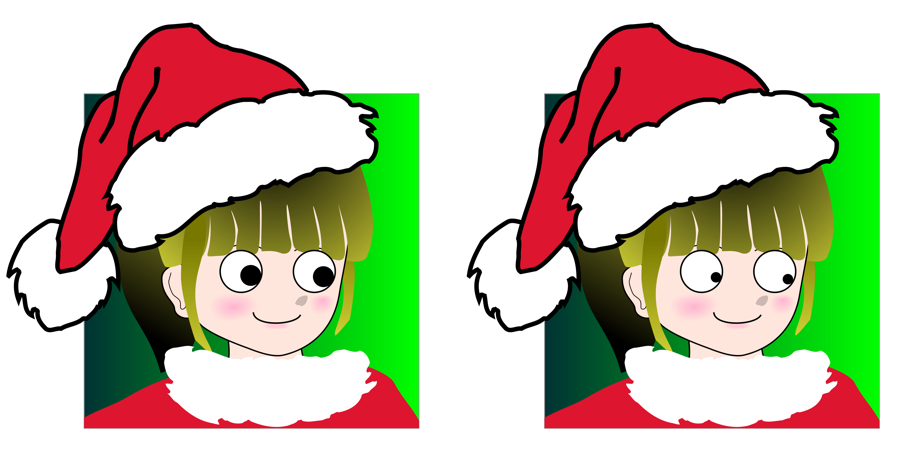
"Size proportion
illusion of irises"
The diameter of the irises in the right image is half of that of the irises in the left image, but the former appears to be much smaller than it is.
Copyright Akiyoshi Kitaoka 2010 (December 18)
I wonder whether this phenomenon reflects the Delboeuf illusion...
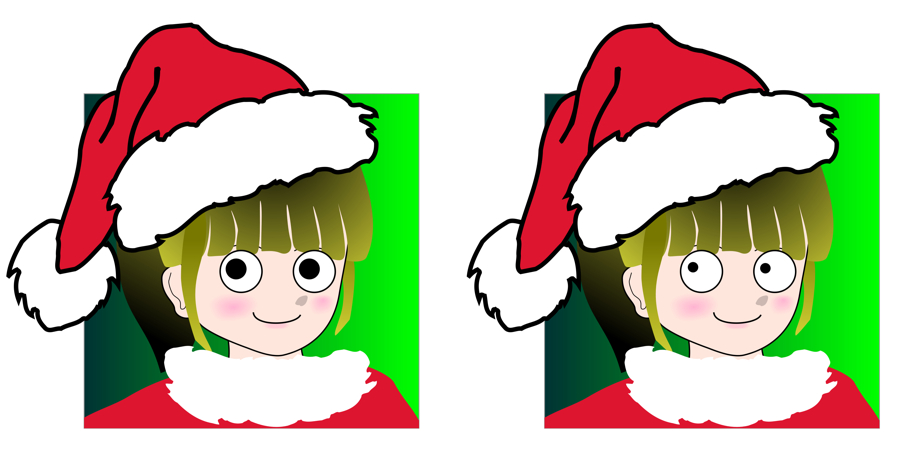
3.7 Eye shadow-induced eye size illusion
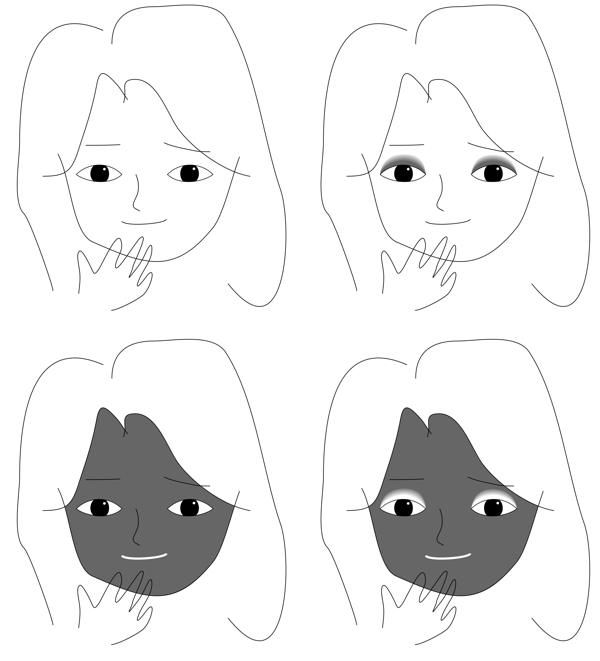
Eye shadows make eyes appear to be larger.
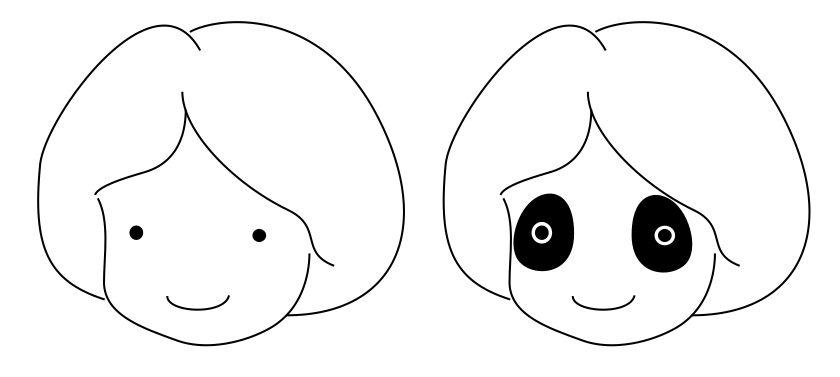
"Abe's
misperception of eye area (Panda eye effect): a human face manga
version"
The eyes of a panda appear to be larger than they really are because of the surrounding black circles.
Copyright Akiyoshi Kitaoka 2010 (October 6)
References
阿部恒之・佐藤智穂・遠藤光男:目の大きさ知覚に及ぼすアイシャドーの効果 ―まぶたの陰影の位置・範囲・濃さを操作した実験的検討― 日本顔学会誌, 9, 111-118, 2009
<Abe, T., Sato, C. and Endo, M. (2009) Effect of eye shadow on eye size
perception: An experimental examination manipulating the position, area
and darkness of eye shadow. Journal of Japanese Academy of
Facial Studies KAOGAKU, 9, 111-118 (in Japanese with English abstract).>

3.8 Eye line thickness illusion
"Underestimation of the higher eyelid line" or "Overestimation of the lower eyelid line"
In the left image, the upper eyelid line appears to be thinner than the upper one, though they are the same thickness. This effect is weak in the inverted face, as shown in the right. The thickness of eyebrows does not seem to affect this illusion.
Copyright Akiyoshi Kitaoka 2012 (January 13)
References
北岡明佳 (2012) 顔の錯視のレビュー BRAIN and NERVE 神経研究の進歩, 64 (7) (増大特集 顔認知の脳内機構),
779-791.
< Kitaoka, A. (2012). A review of face illusions. BRAIN and NERVE, 64(7), 779-791 (in Japanese with English abstract). >
3.9 Eyebrow-induced impact of eyes
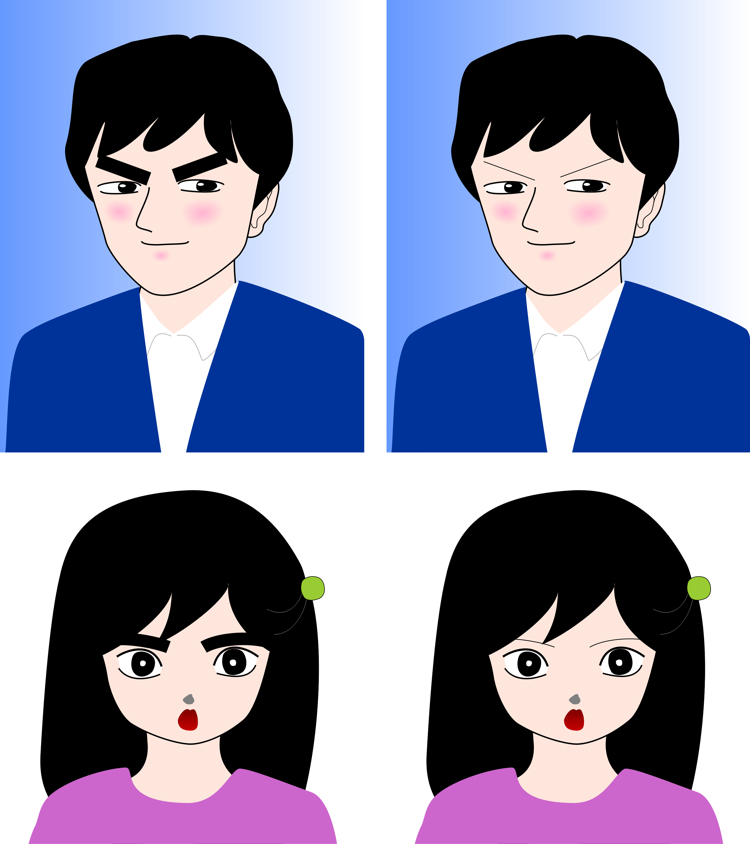
Thick eyebrows make the impression of eyes clearer or stronger than thin eyebrows.
References
北岡明佳 (2012) 顔の錯視のレビュー BRAIN and NERVE 神経研究の進歩, 64 (7) (増大特集 顔認知の脳内機構), 779-791.
< Kitaoka, A. (2012). A review of face illusions. BRAIN and NERVE, 64(7), 779-791 (in Japanese with English abstract). >
藤本清:BU Illusion (Bold by Underline illusion). 第2回錯視コンテスト入賞作品, 2010 http://www.psy.ritsumei.ac.jp/~akitaoka/sakkon/sakkon2010.html
4. Others
4.1 Flashed face distortion effect
![]() Shocking illusion - Pretty girls turn ugly!
Shocking illusion - Pretty girls turn ugly!
posted by TangenCognitionLab
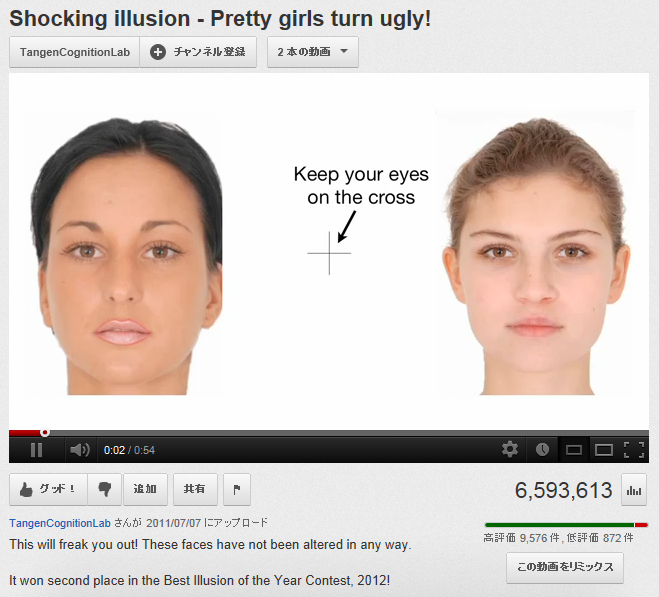
References
Tangen, J. M., Murphy, S. C., and Thompson, M. B.: Flashed face distortion effect: Grotesque faces from relative spaces. Perception, 40, 628-630, 2011
4.2 Wobbling Face illusion
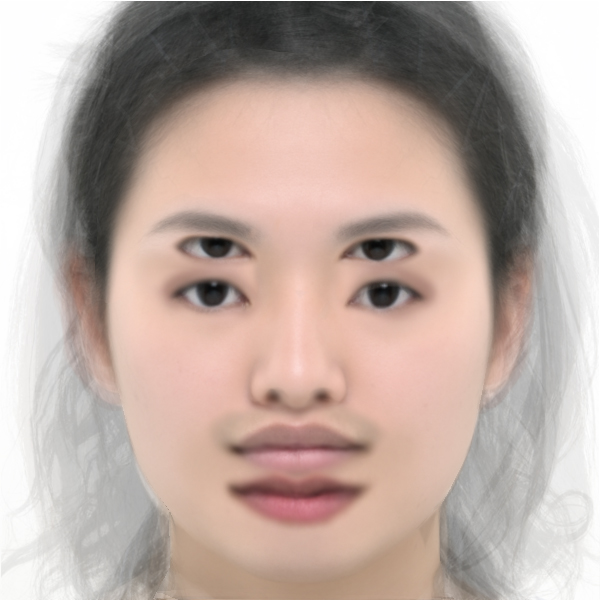
"Wobbling Face
and Sex illusion"
The face appears to wobble
as well as the apparent sex is ambiguous and flips to the
other.
Uploaded with permission of Dr. Sayako Ueda
Copyright
Sayako Ueda 2011
uploaded
December 28, 2011
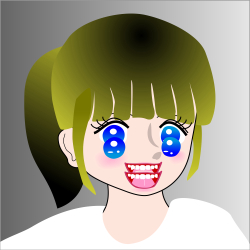
"Knocked-face illusion like 'Marquise Casati'"
Doubled eyes and mouths appear to be unstable.
Copyright Akiyoshi Kitaoka 2009 (December 26)
References
Double Vision pictures (http://www.freakingnews.com/Double-Vision-Pictures--1762-0.asp)
Hancock P J B, Foster C, 2012, "The ‘double face’ illusion" Perception 41(1) 57 – 70
Ueda, S., Kitaoka, A., and Suga, T. (2011). Wobbling appearance of a face induced by doubled parts. Perception, 40, 751-756.
4.3 Mouth- or eyebrow-induced perception of eye expression
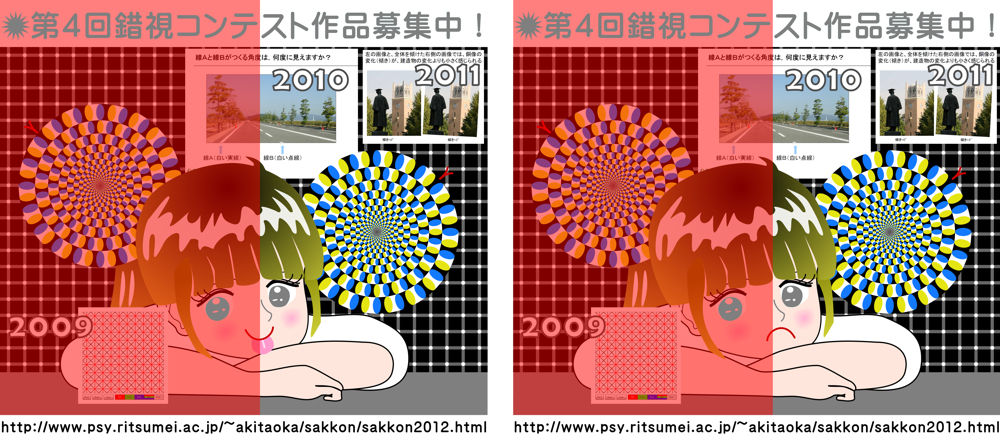
The eyes in the left face appear to be happy and relaxed while those in the right one appear to be angry or sad, though both are the same.
Copyright Akiyoshi Kitaoka 2012 (October 11)
"Mouth superiority effect" and "eyebrows superiority effect"
 (renewal)
(renewal)
Although all eyes are identical among the images shown above, they appear to be angry (happy) if the mouth or eyebrows show an angry (happy) expression. These effects (mouth superiority effect and eyebrows superiority effect) overcome the eye superiority effect. These effects were proposed by Dr. Yoshinori Kitahara, Central Research Laboratory, Hitachi, Ltd. These image were drawn by him.
Copyright Yoshinori Kitahara 2008 (August 7)
from Yoshinori Kitahara, Tokyo, Japan, August 7, 2008
![]() The "mouth supeiority effect", more precisely "mouth superiority
effect on the apparent expression of the eyes", was first reported
by Sayako Ueda in 2007. <January 28, 2012>
The "mouth supeiority effect", more precisely "mouth superiority
effect on the apparent expression of the eyes", was first reported
by Sayako Ueda in 2007. <January 28, 2012>
Ueda, S. (2007) The recognition of happiness in the eyes: Is there a "Language of the Eyes"? Japanese Journal of Cognitive Psychology, 5, 63-69 (in Japanese with English abstract).
References
川口聖世:喜び表情における顔のパーツの重要性 2011年度立命館大学文学部卒業論文, 2011
北原義典:謎解き・人間行動の不思議 感覚・知覚からコミュニケーションまで (ブルーバックス B-1654). 東京, 講談社, 2009
原島博:第34回イブニングセミナー 2009年5月27日 『阿修羅の顔の謎を解く』. J-FACE NEWLETTER, 40, 3, 2009
上田彩子:眼の喜び表情の決定要因: 眼は口ほどにものを言うか? 認知心理学研究, 5, 63-69, 2007
<Ueda, S. (2007) The recognition of happiness in the eyes: Is there a "Language of the Eyes"? Japanese Journal of Cognitive Psychology, 5, 63-69 (in Japanese with English abstract).>
Ueda, S.: The configural processing of facial expression in identification of facial parts: Are eyes more eloquent than lips? Psychology Research, 1, 135-147, 2011
Overall references
北岡明佳 (2010) 錯視入門 朝倉書店
< Kitaoka, A. (2010). Introduction to visual illusions. Topkyo: Asakura-shoten (in Japanese). >
北岡明佳 (2012) 顔の錯視のレビュー BRAIN and NERVE 神経研究の進歩, 64 (7) (増大特集 顔認知の脳内機構),
779-791. ![]()
< Kitaoka, A. (2012). A review of face illusions. BRAIN and NERVE, 64(7), 779-791 (in Japanese with English abstract). >
北岡明佳 (2012) 顔の錯視 日本顔学会誌, 12(1), 9-19.
< Kitaoka, A. (2012). Face illusions. Journal of Japanese Academy of
Facial Studies, 12(1), 9-19 (in Japanese). >
Acknowledgements: This study was supported by Grant-in-aid "Face perception and recognition: Multidisciplinary approaches to understanding face processing mechanism" awarded to Akiyoshi Kitaoka ("Discovery study of face illusions": No. 21119522) by the Ministry of Education, Culture, Sports, Science and Technology.
平成21・22年度科学研究費補助金(新学術領域研究 「学際的研究による顔認知メカニズムの解明」・領域代表者 自然科学研究機構生理学研究所・教授 柿木隆介) (研究代表者・北岡明佳) 「顔の錯視の探索的研究」 課題番号21119522
And, there remains many other face illusions I did not ntroduce here.
Thank you!
